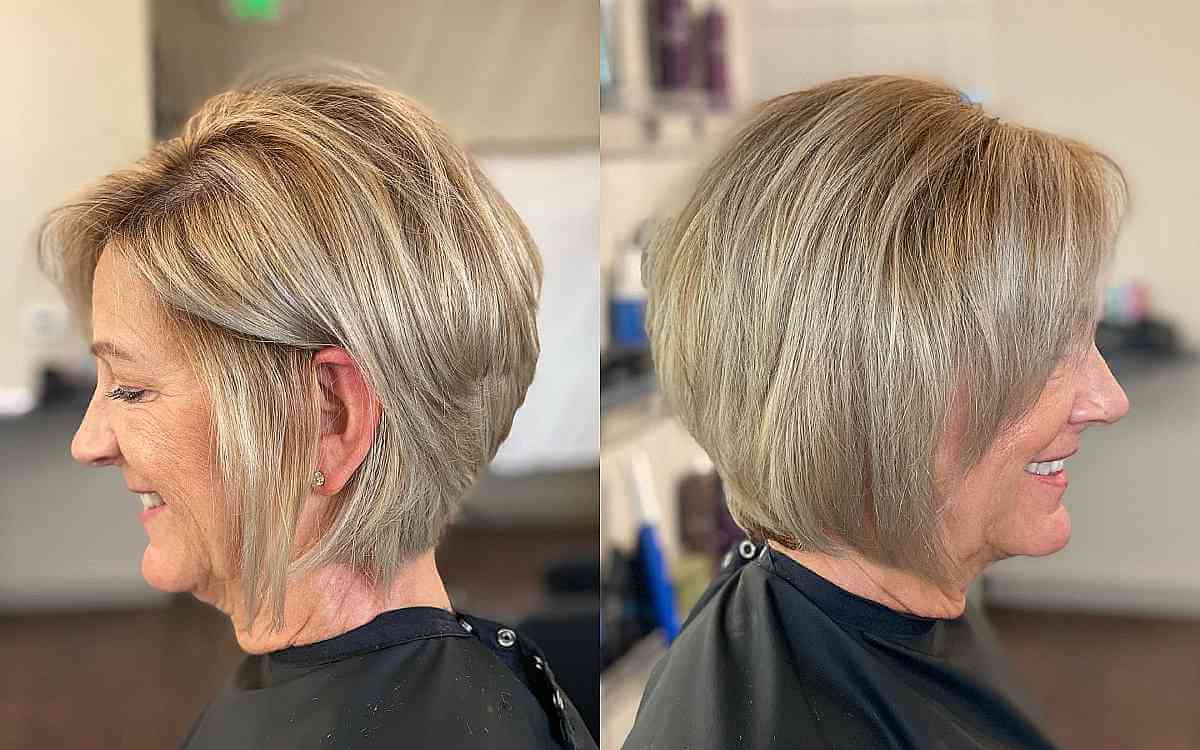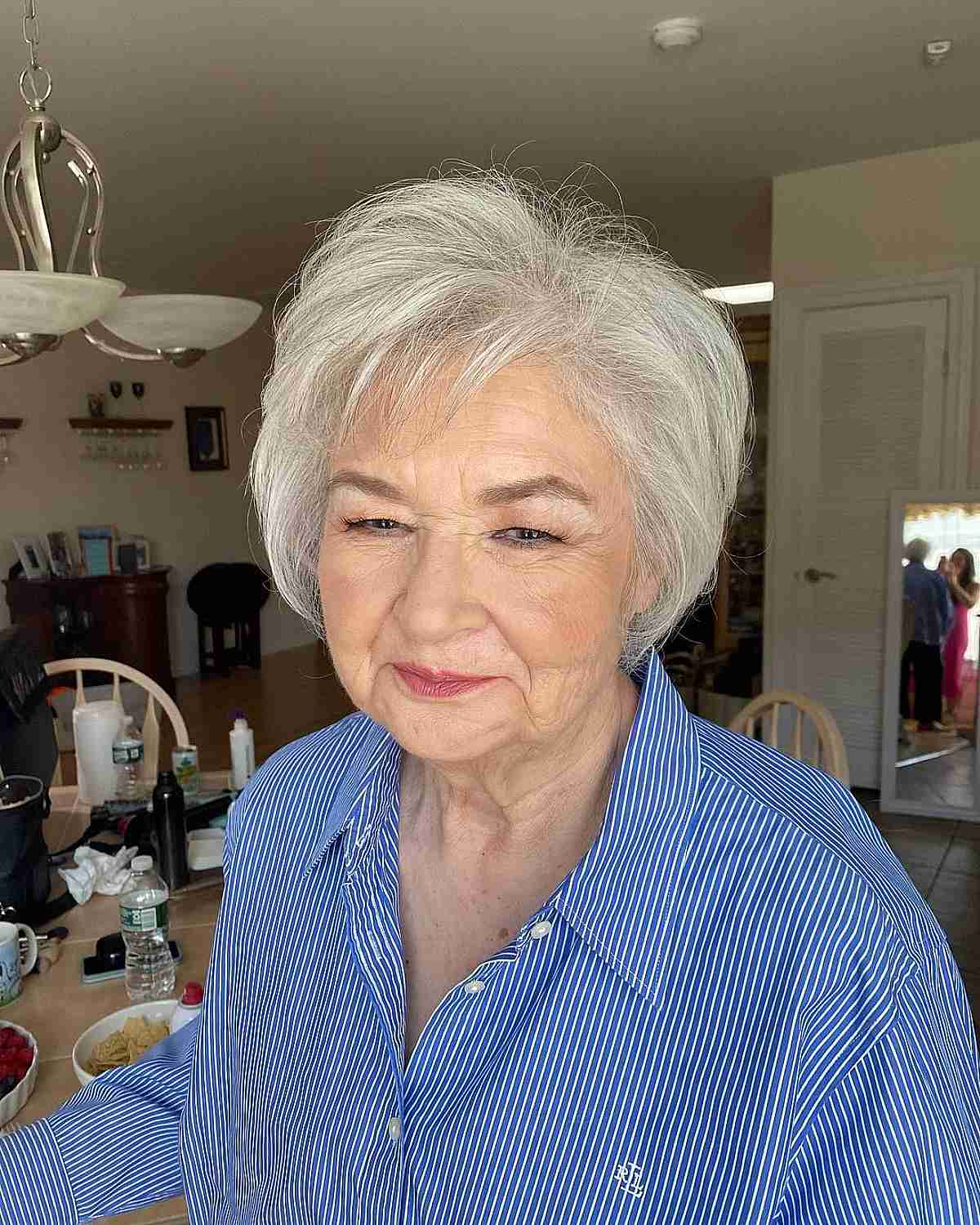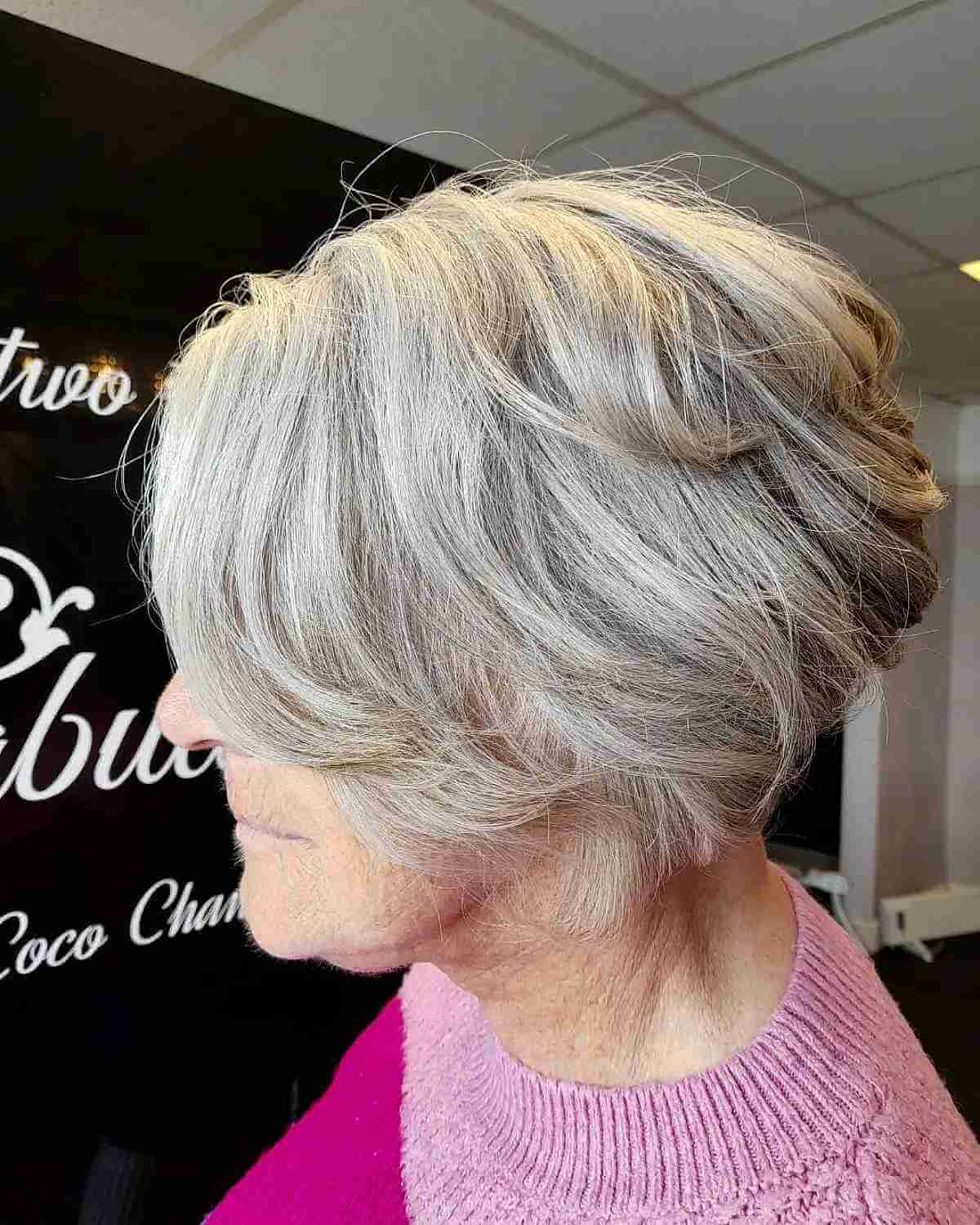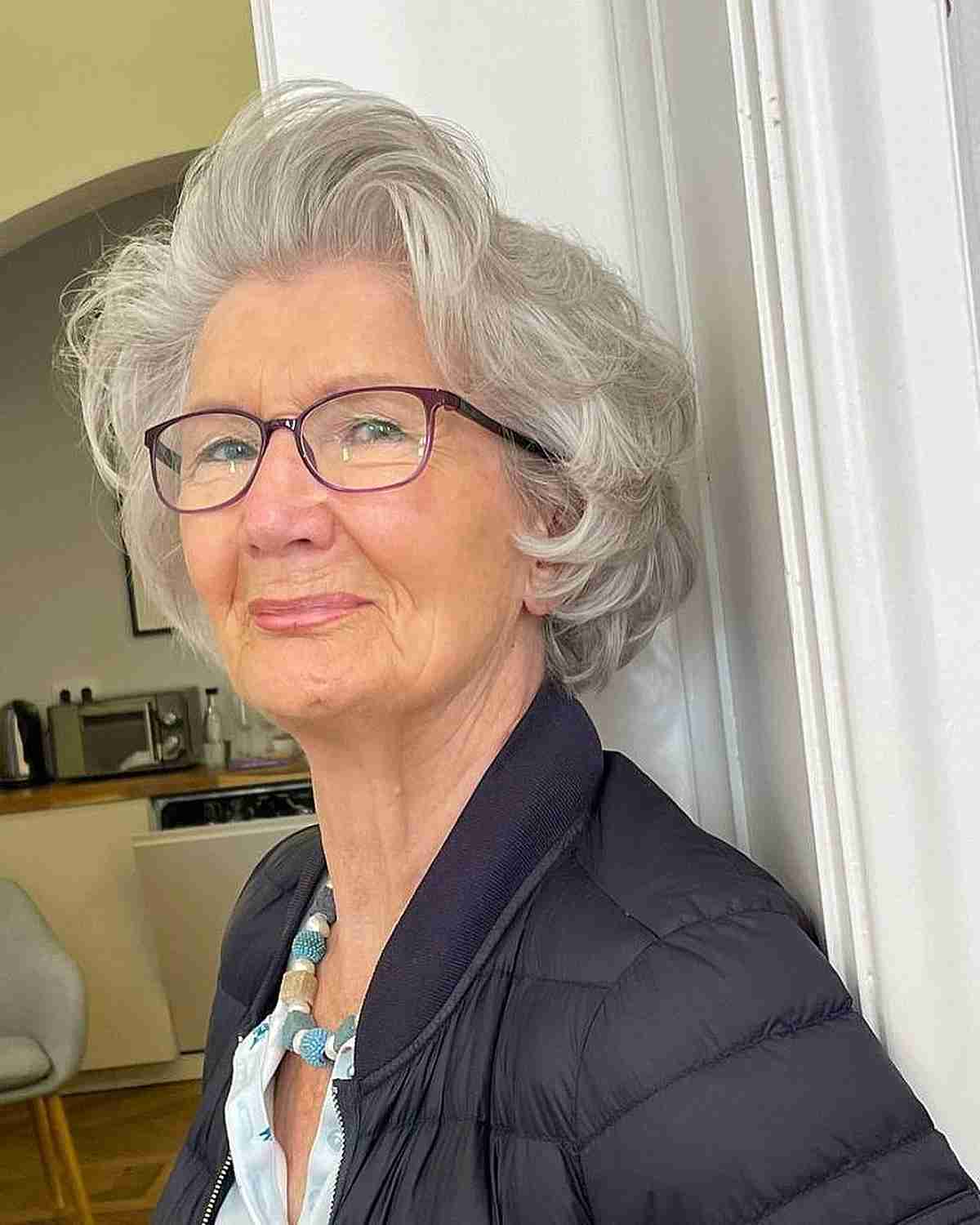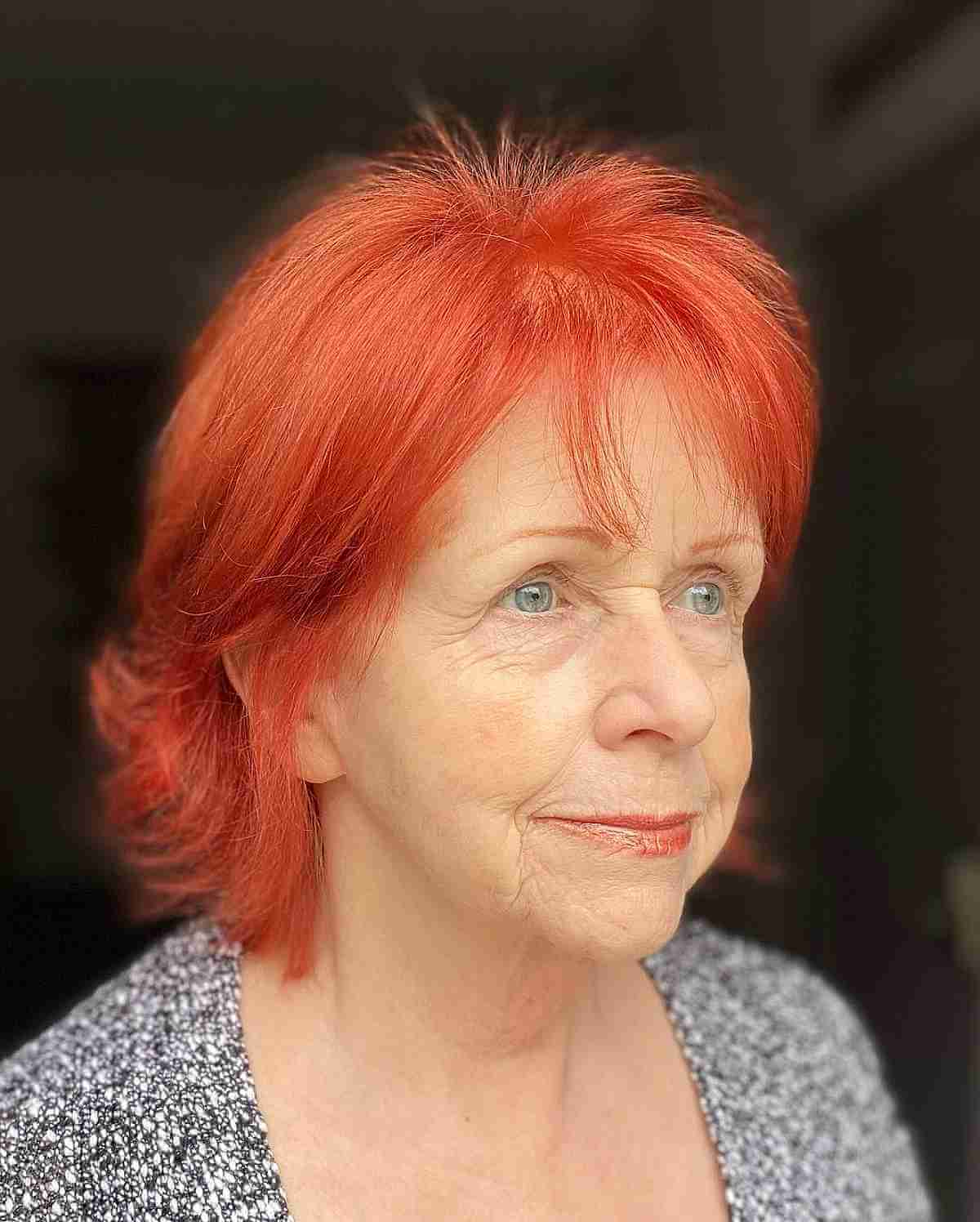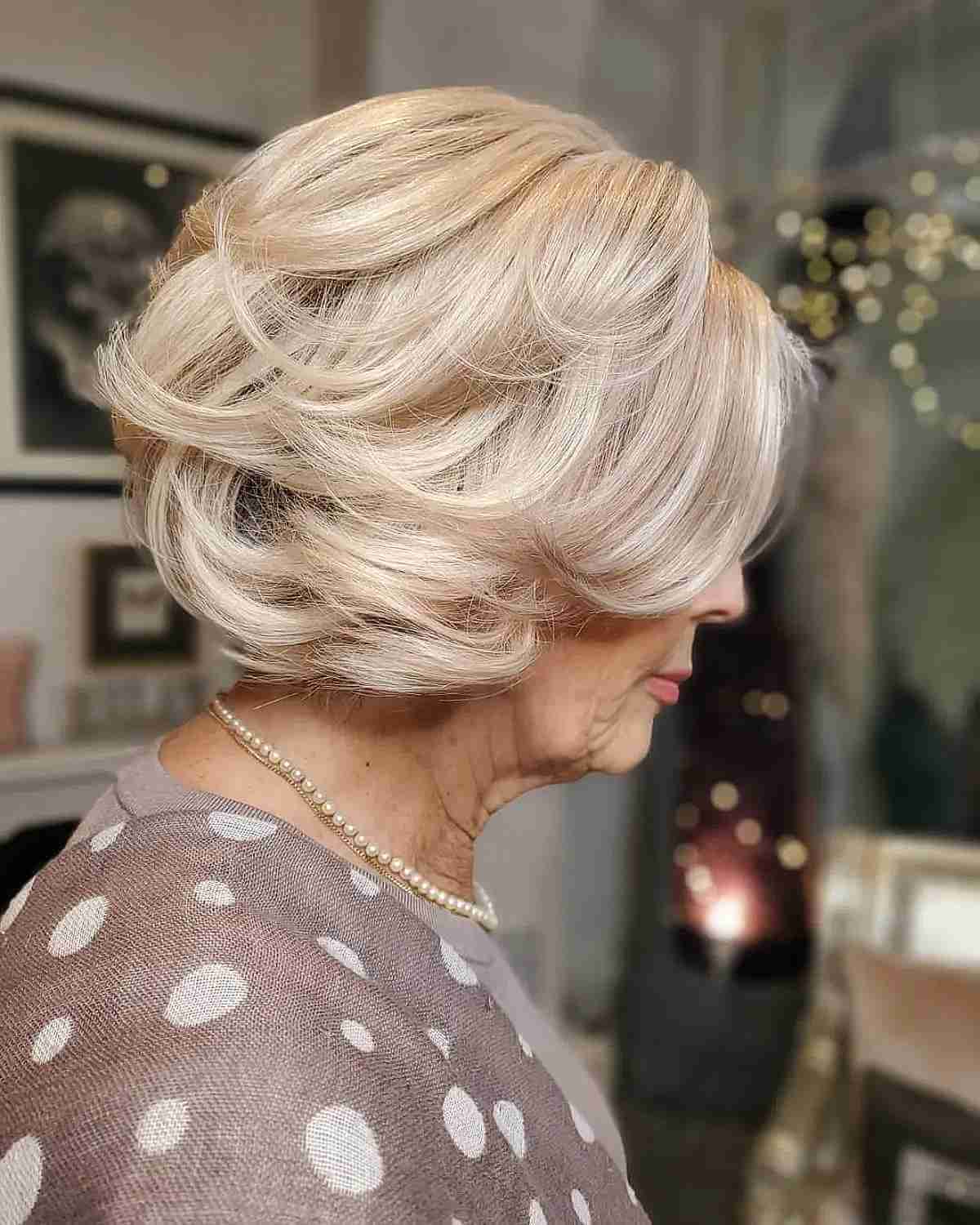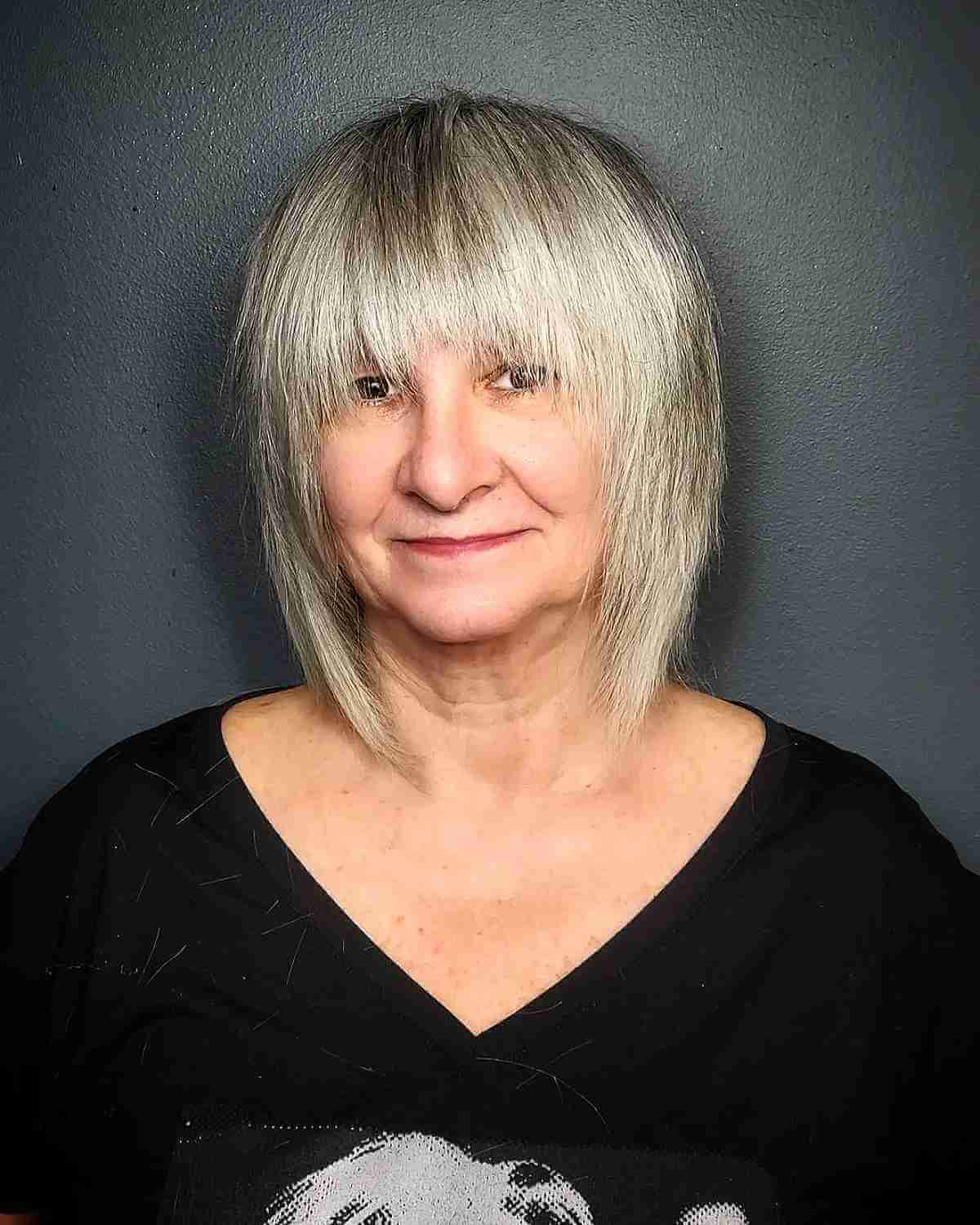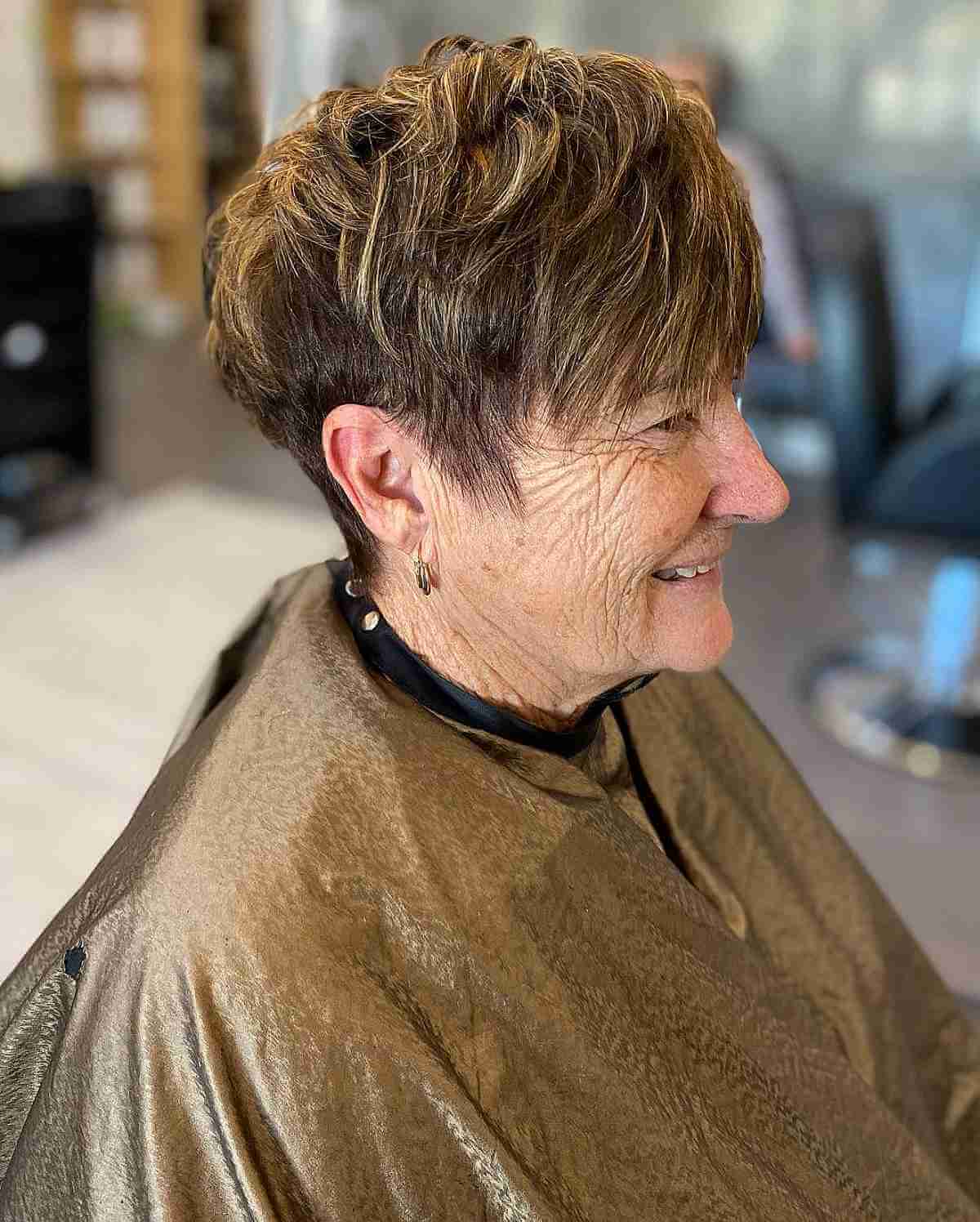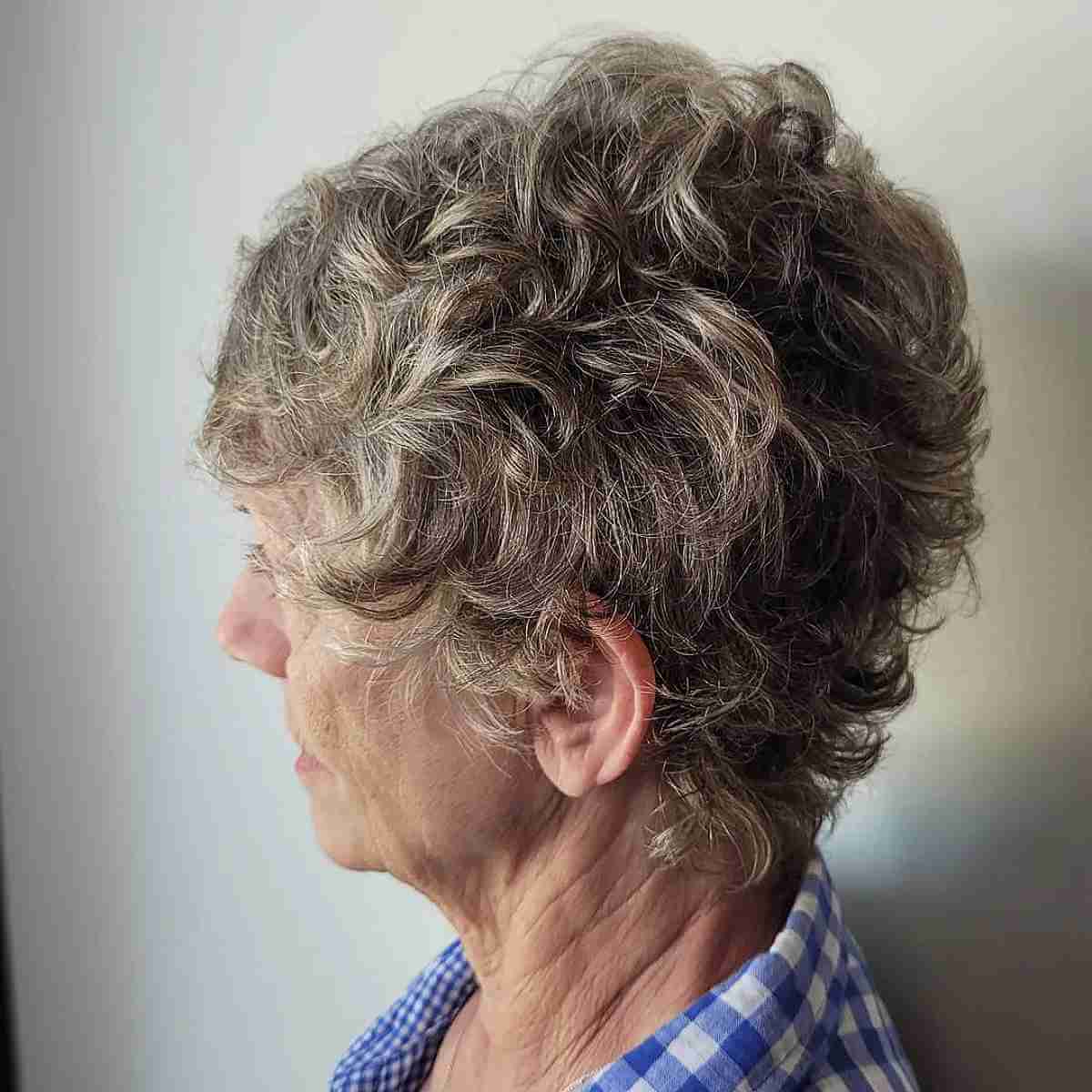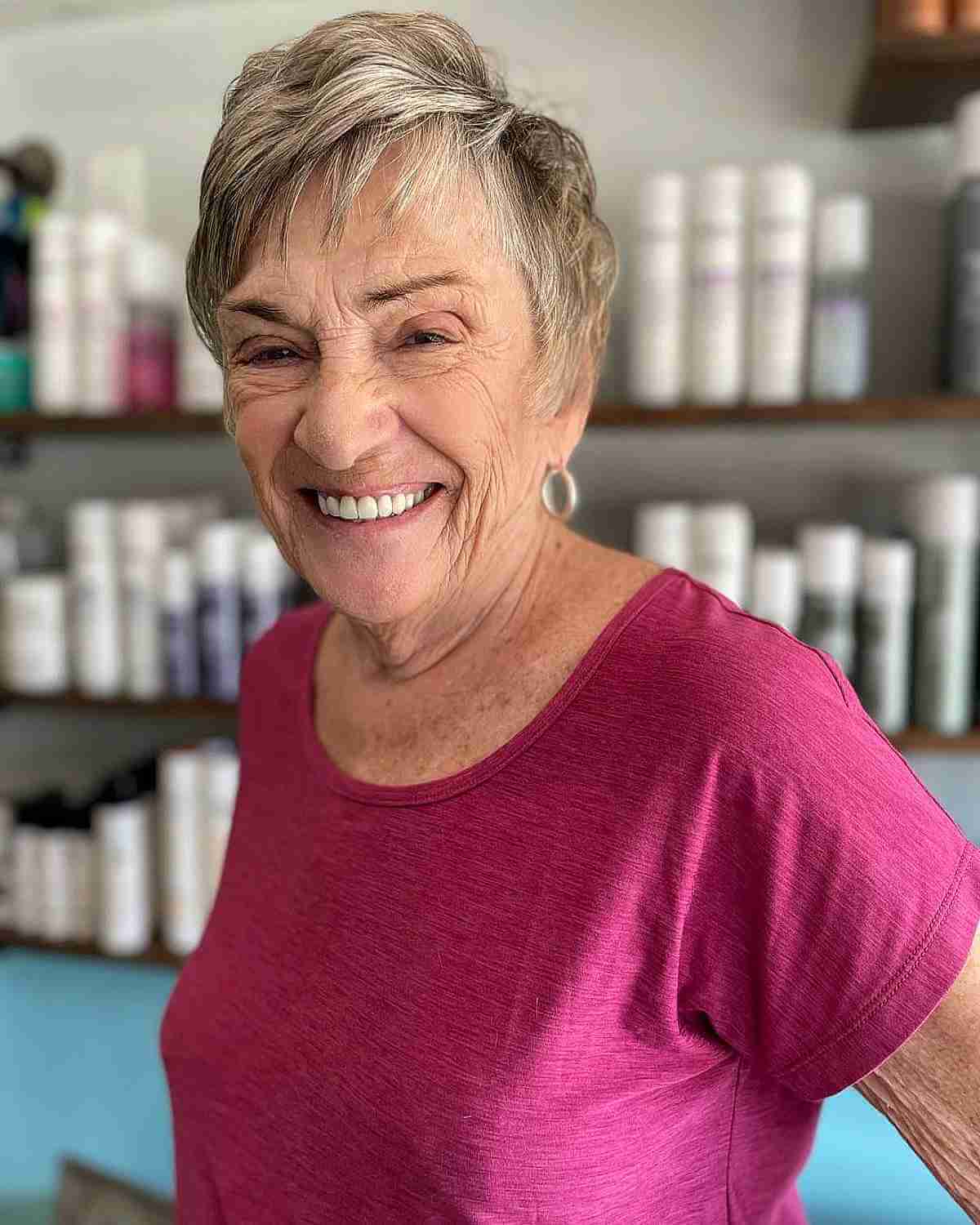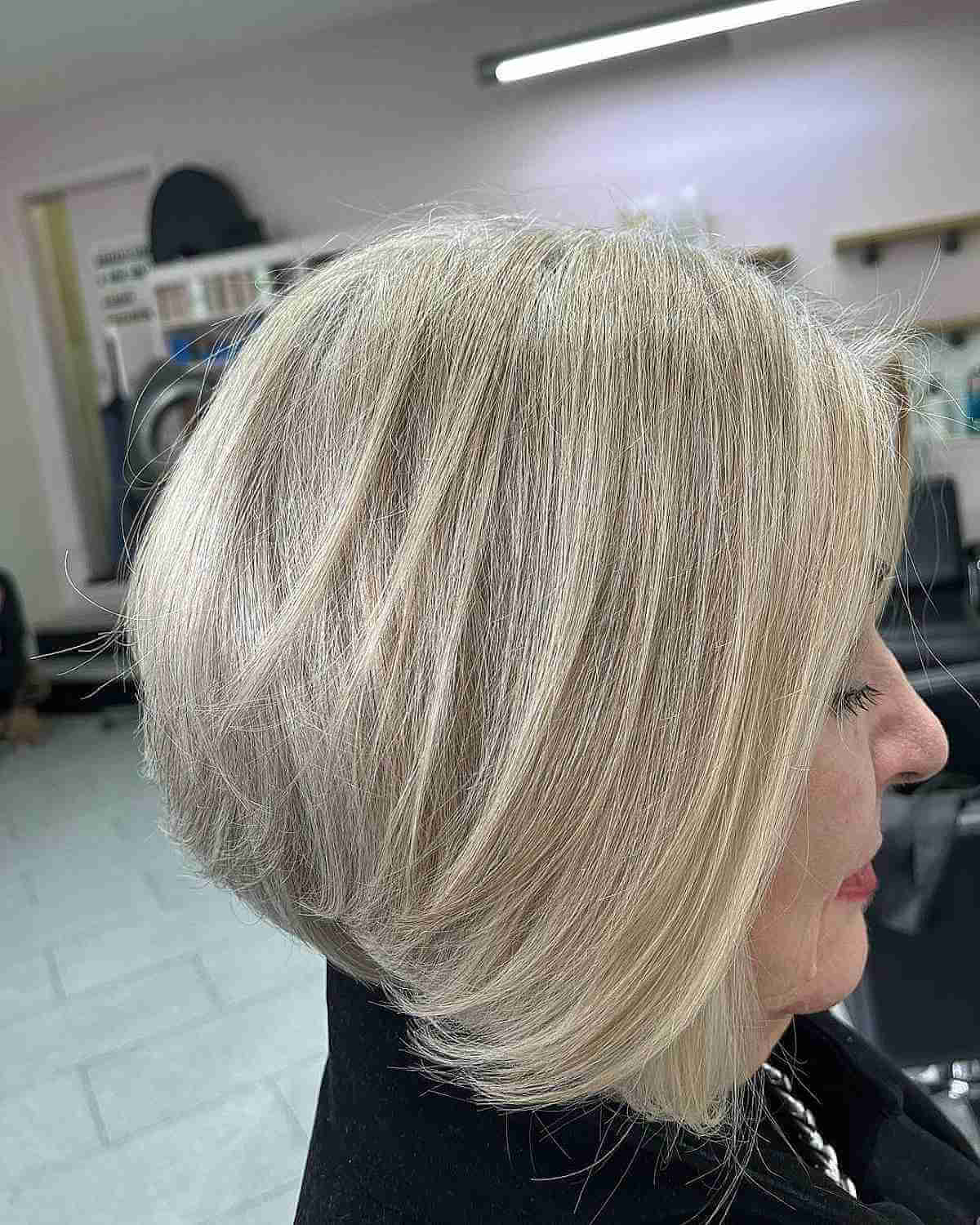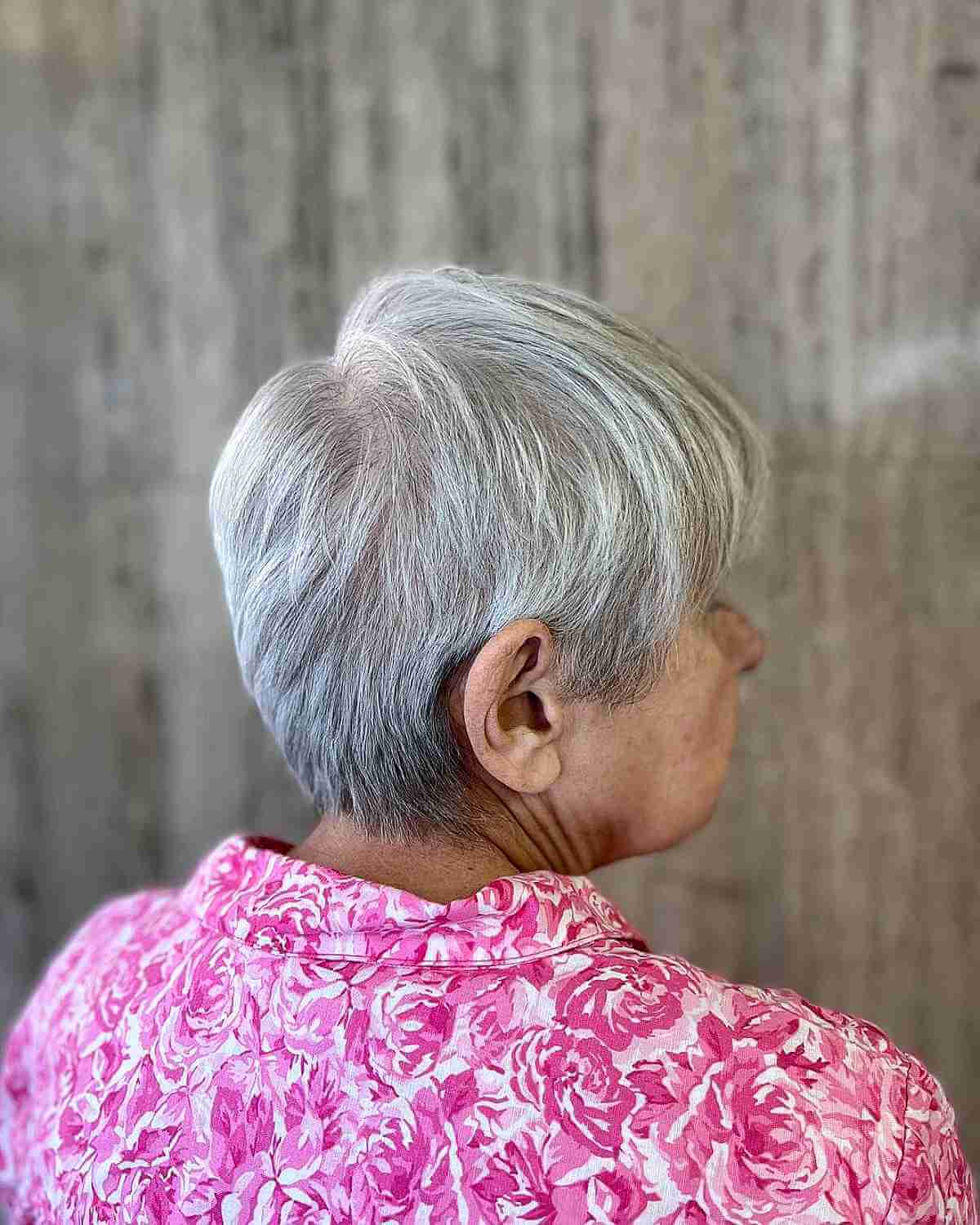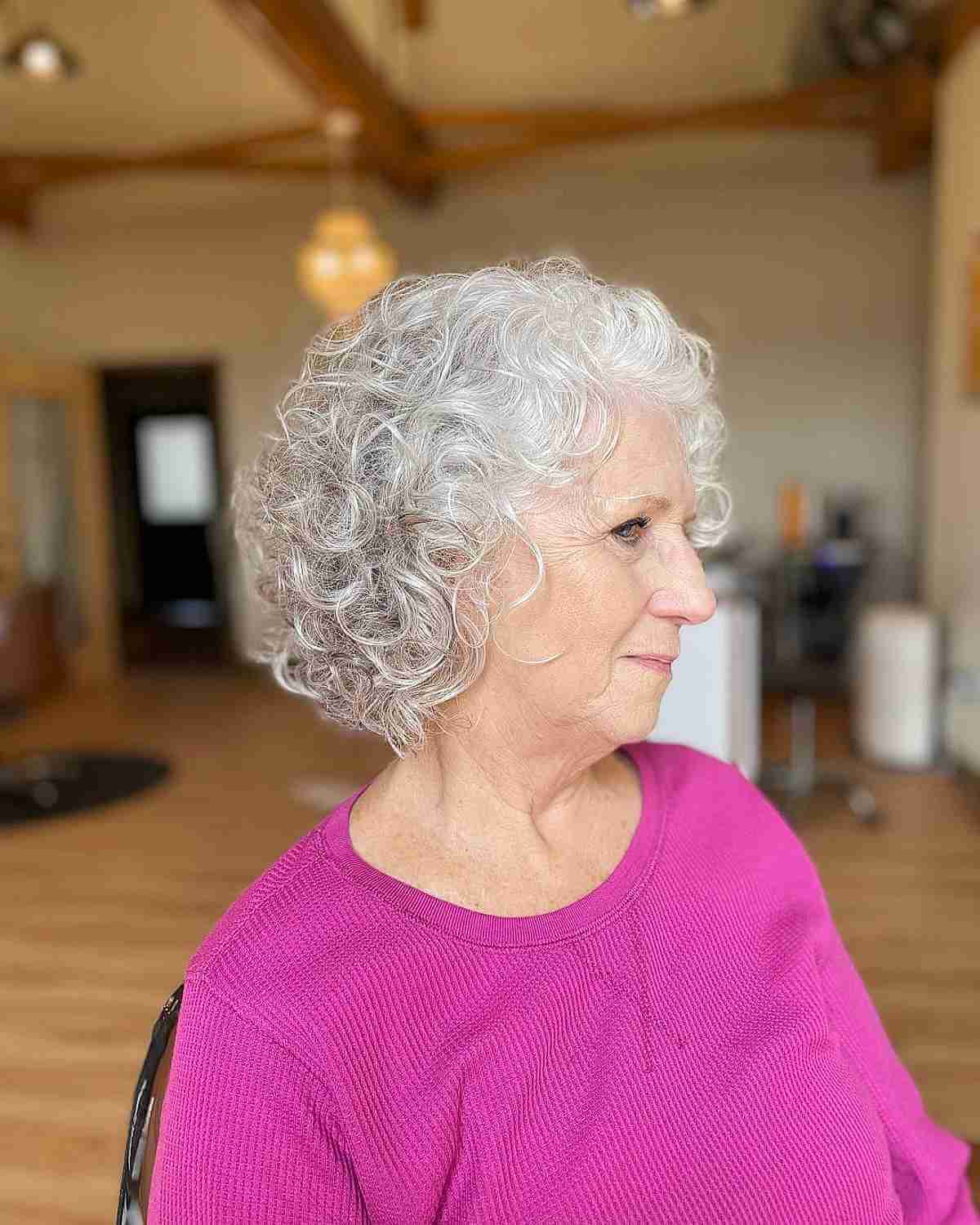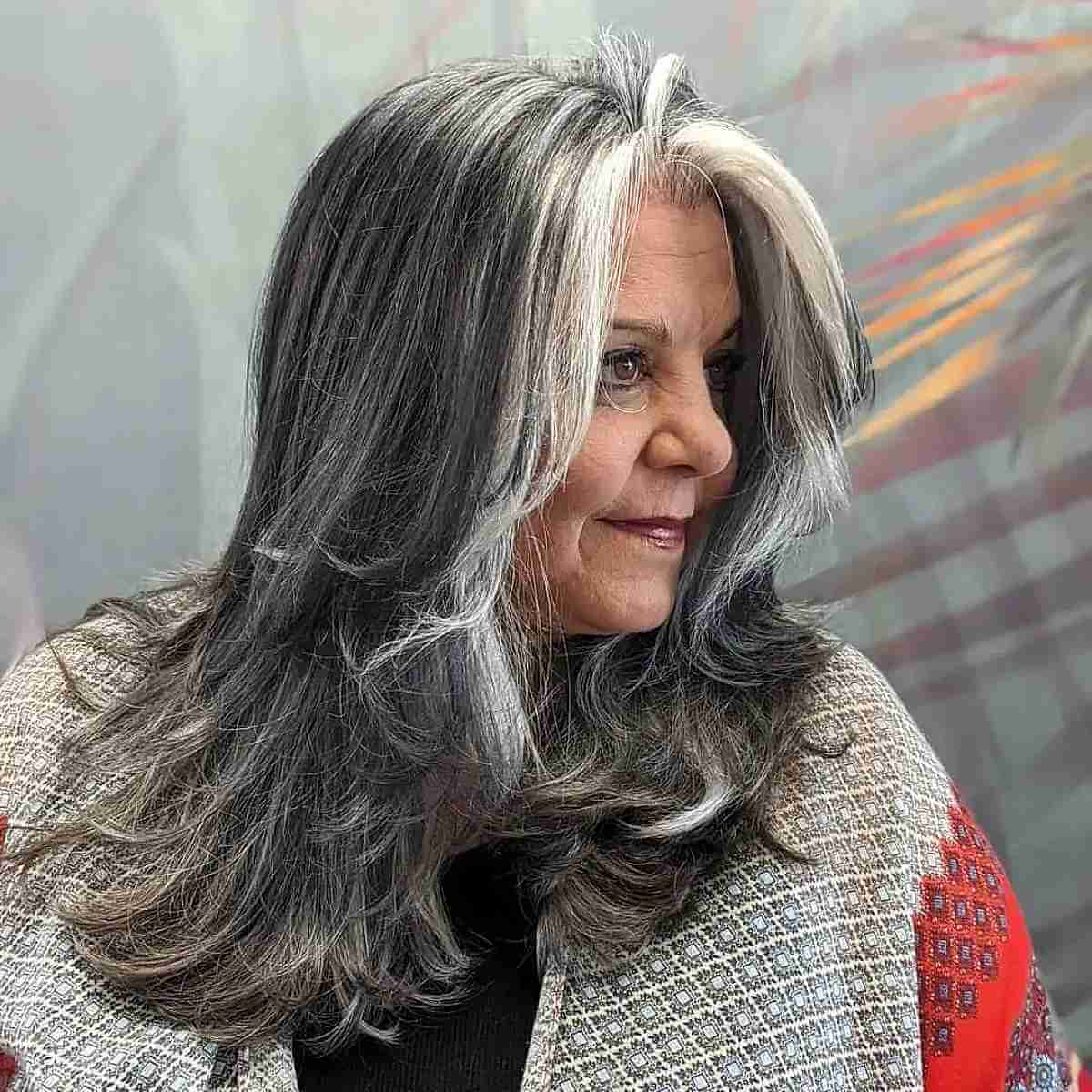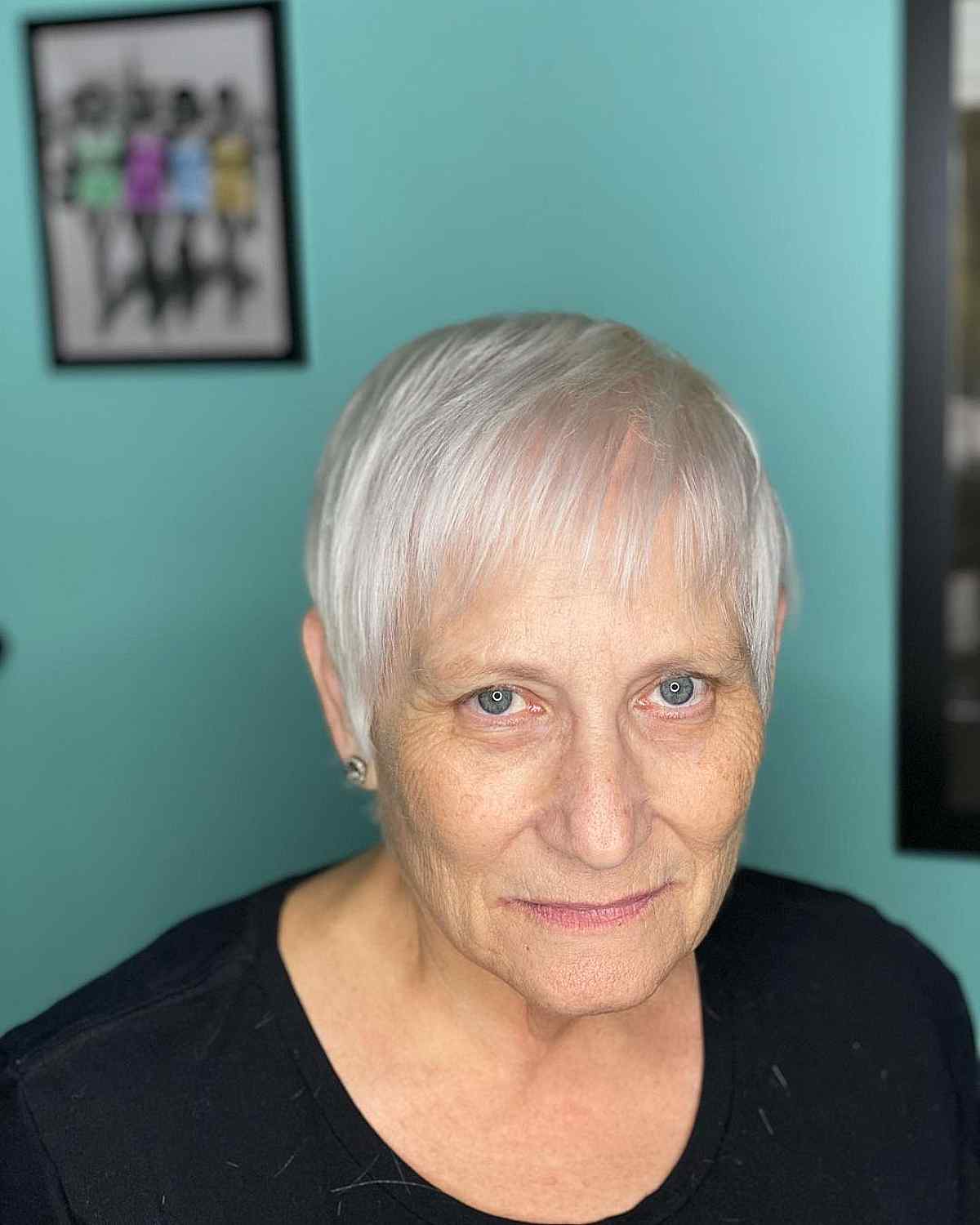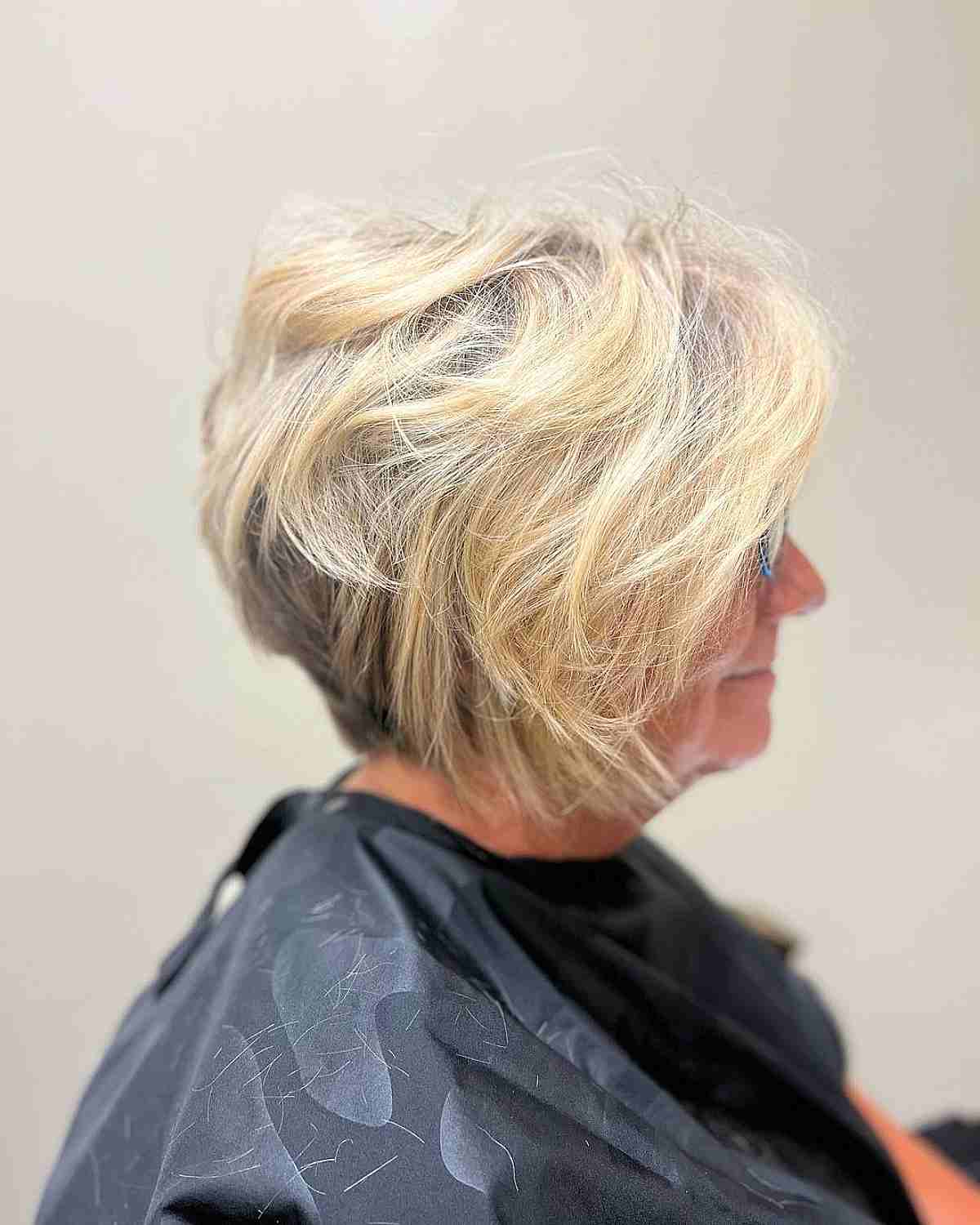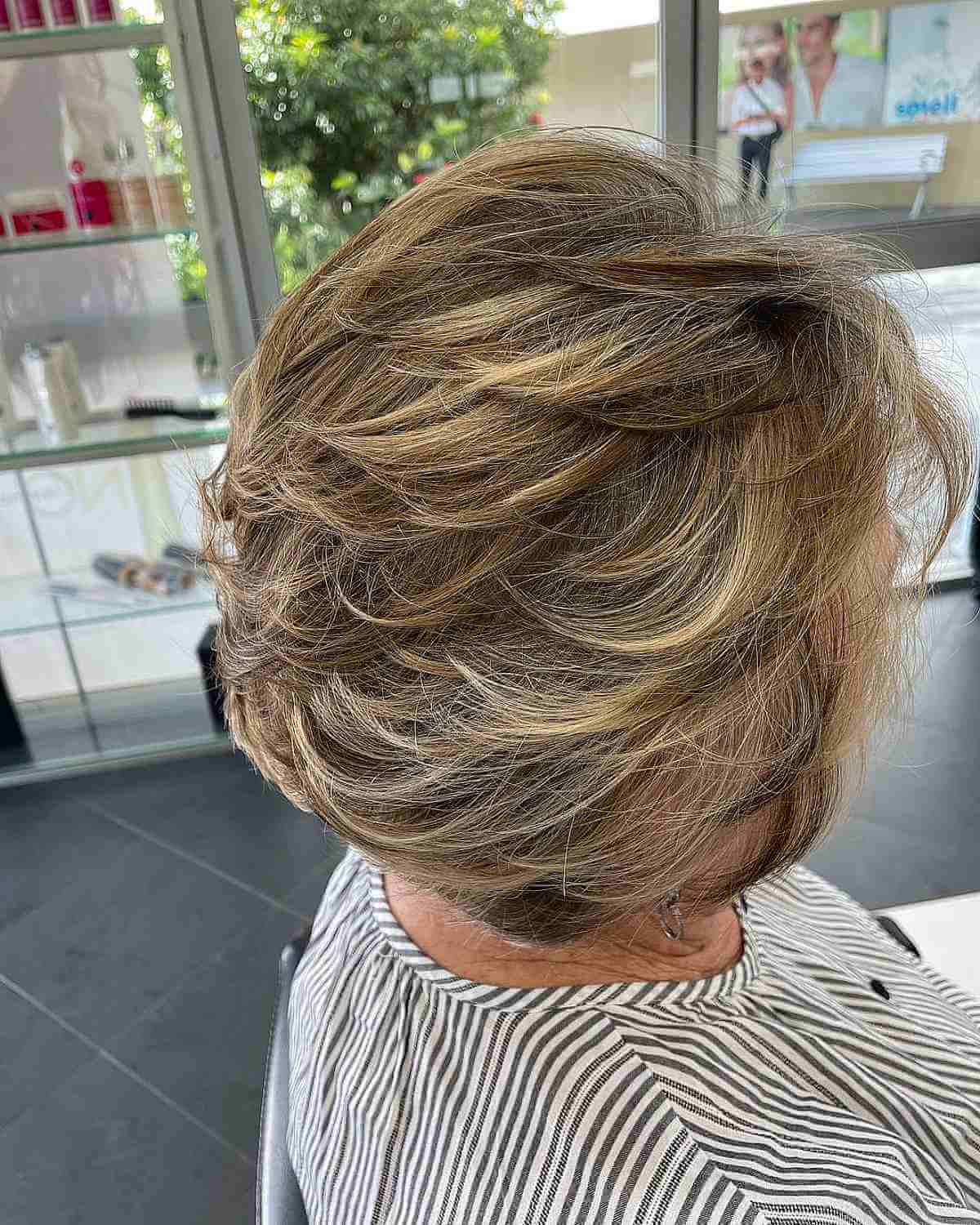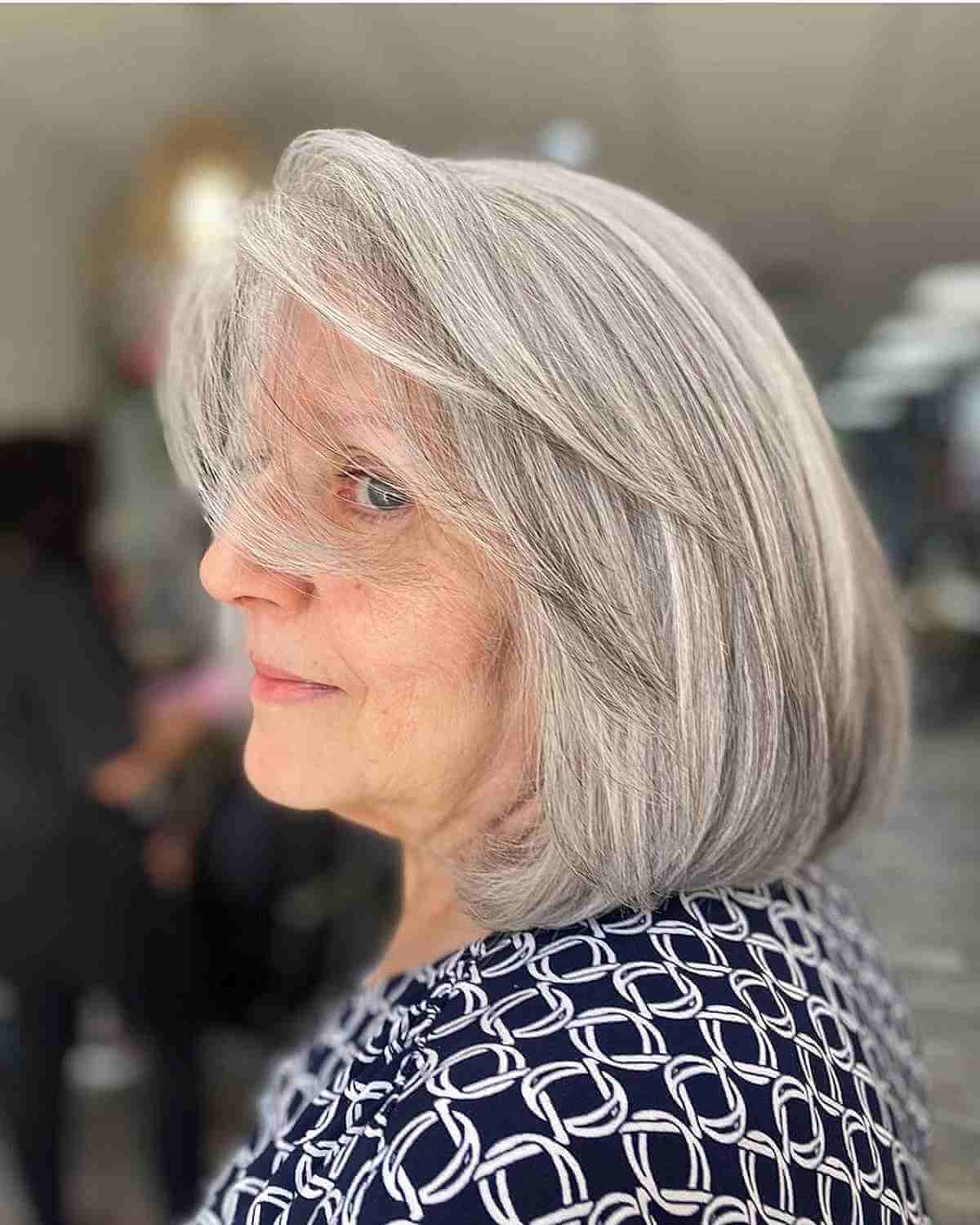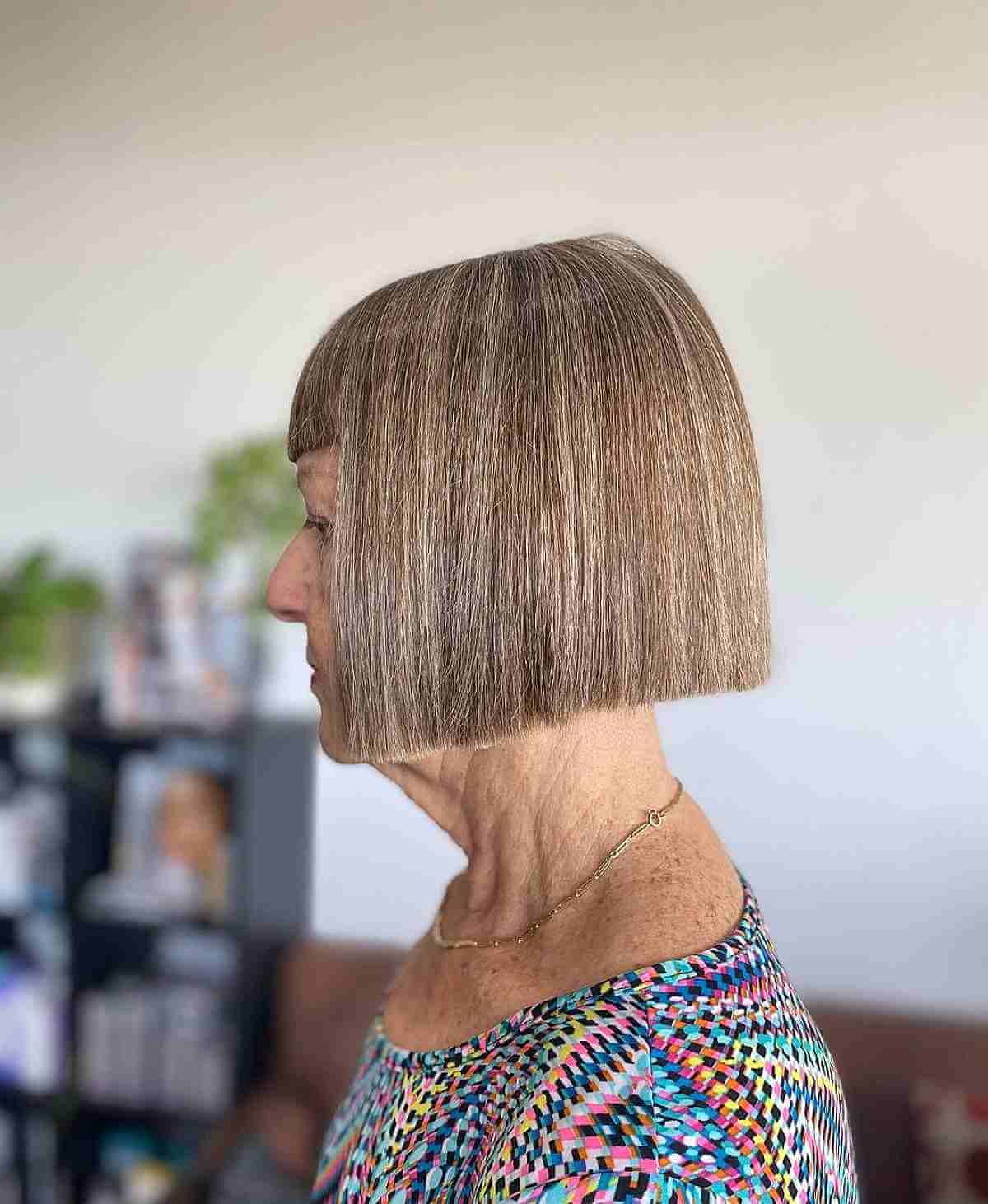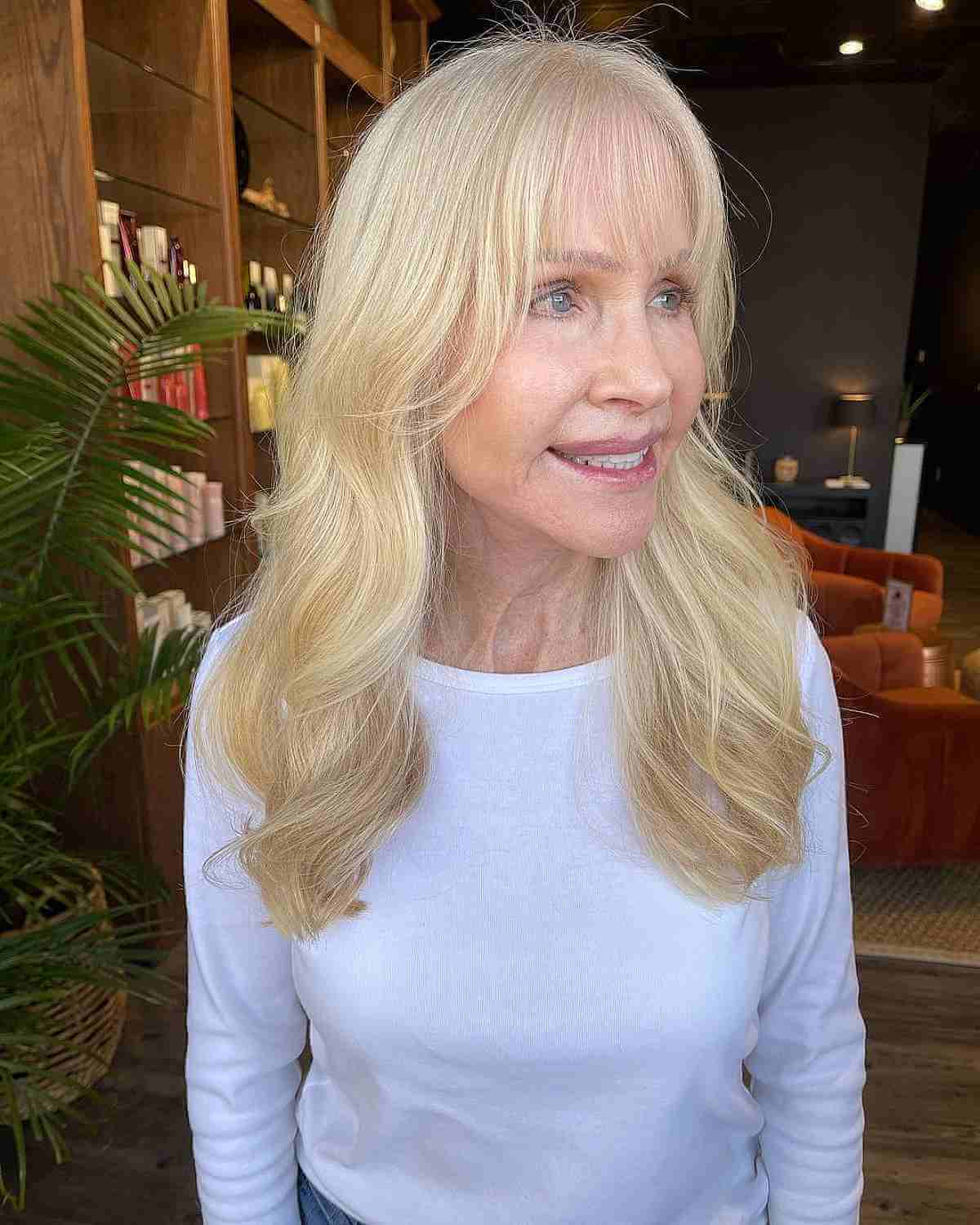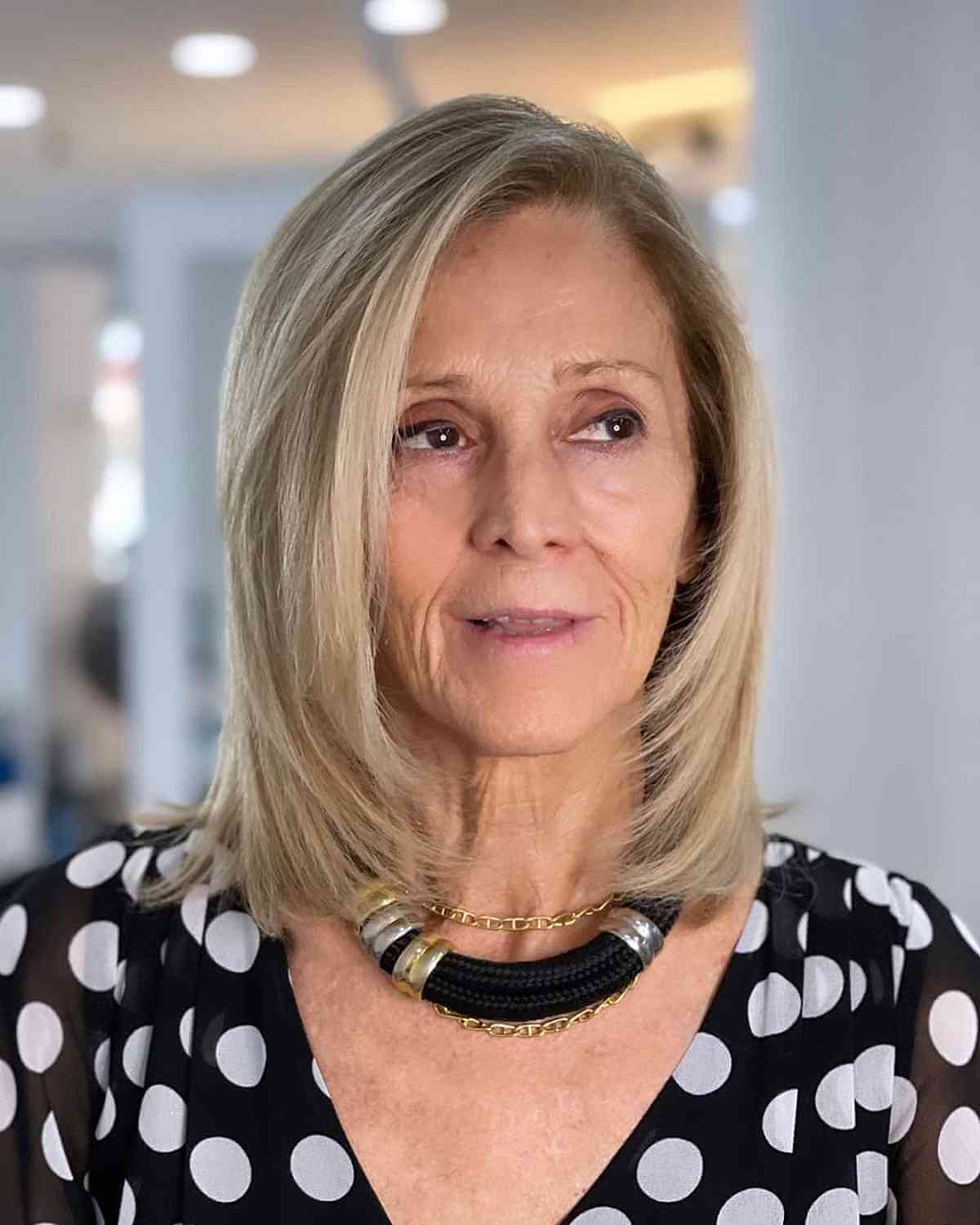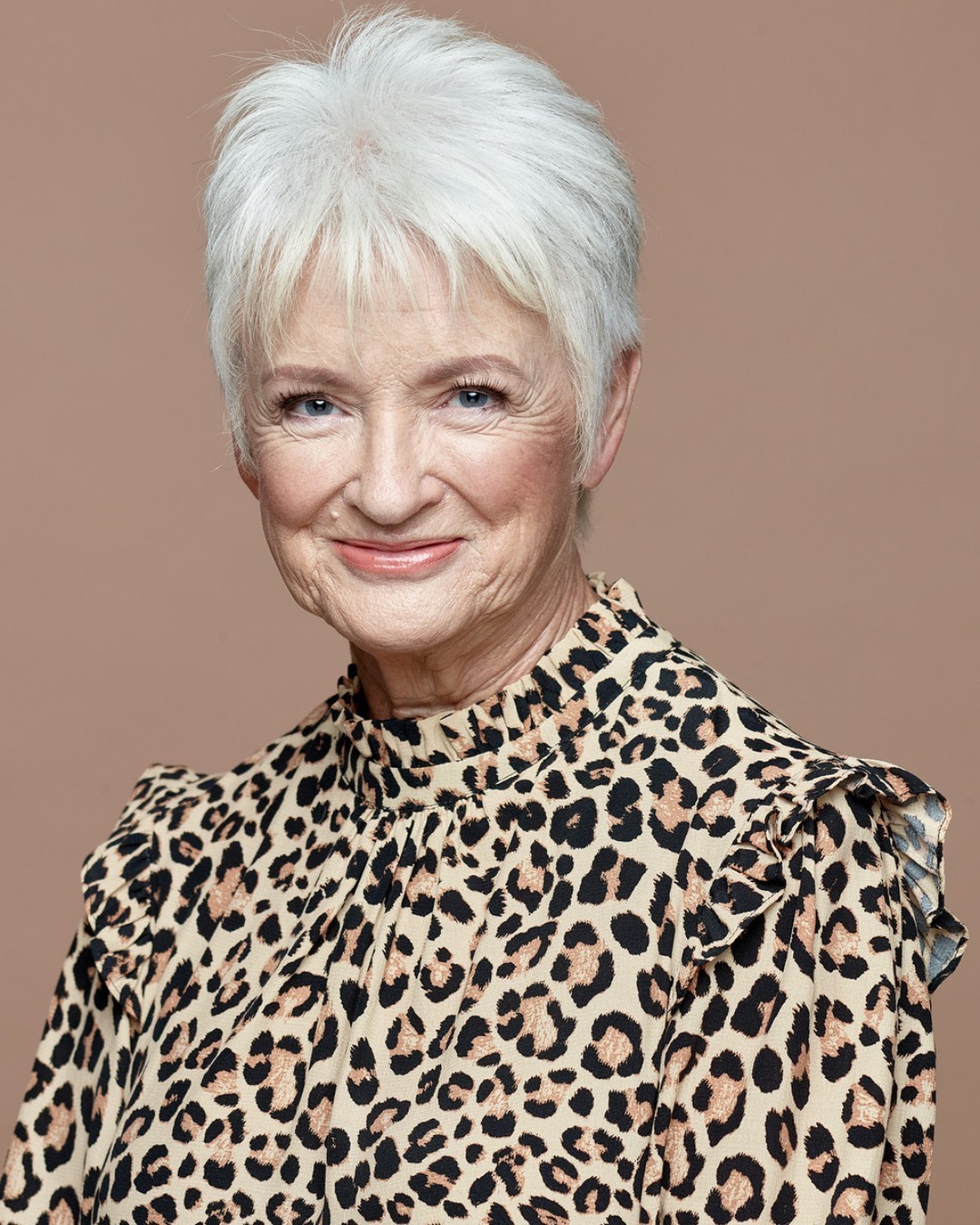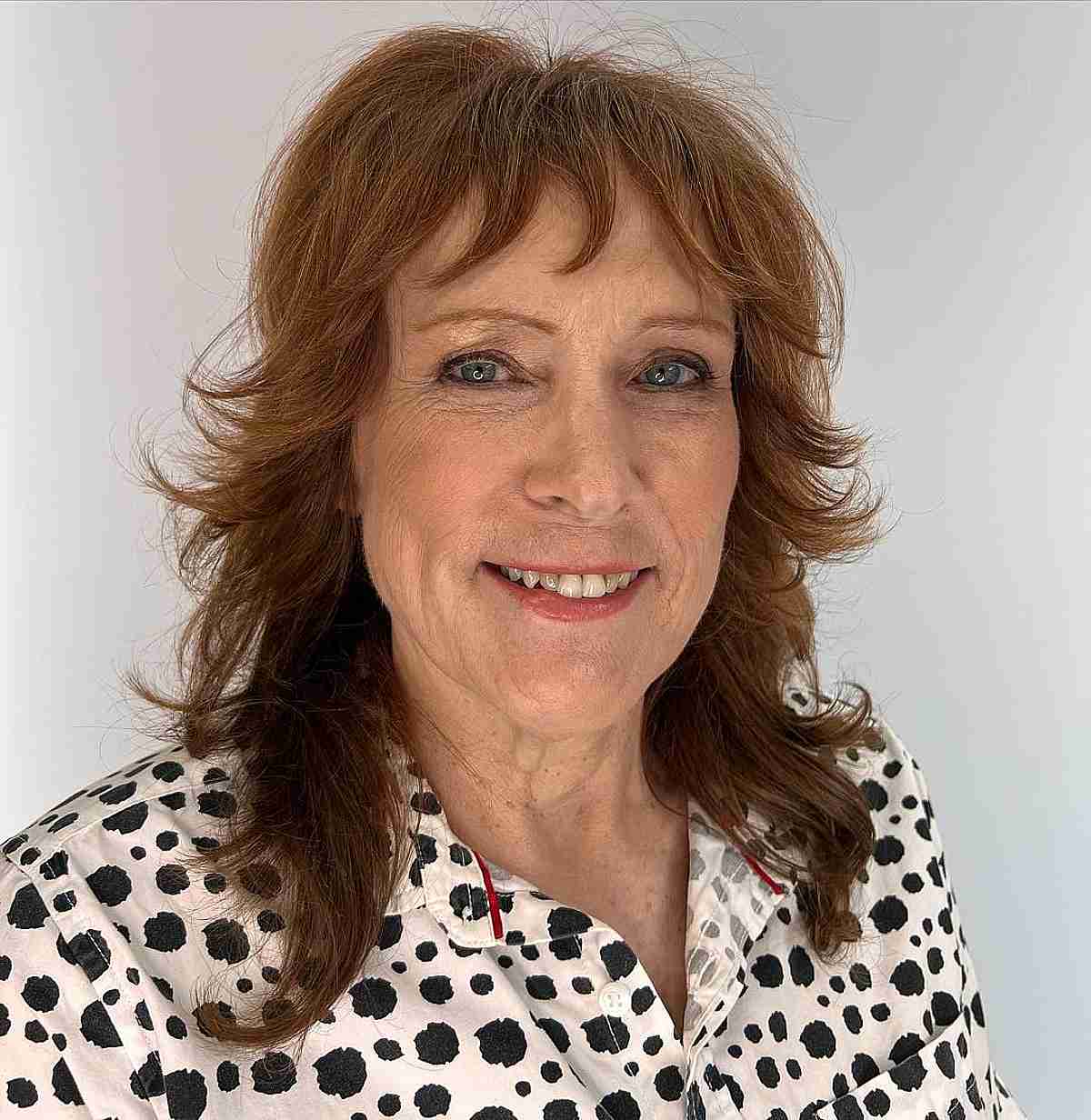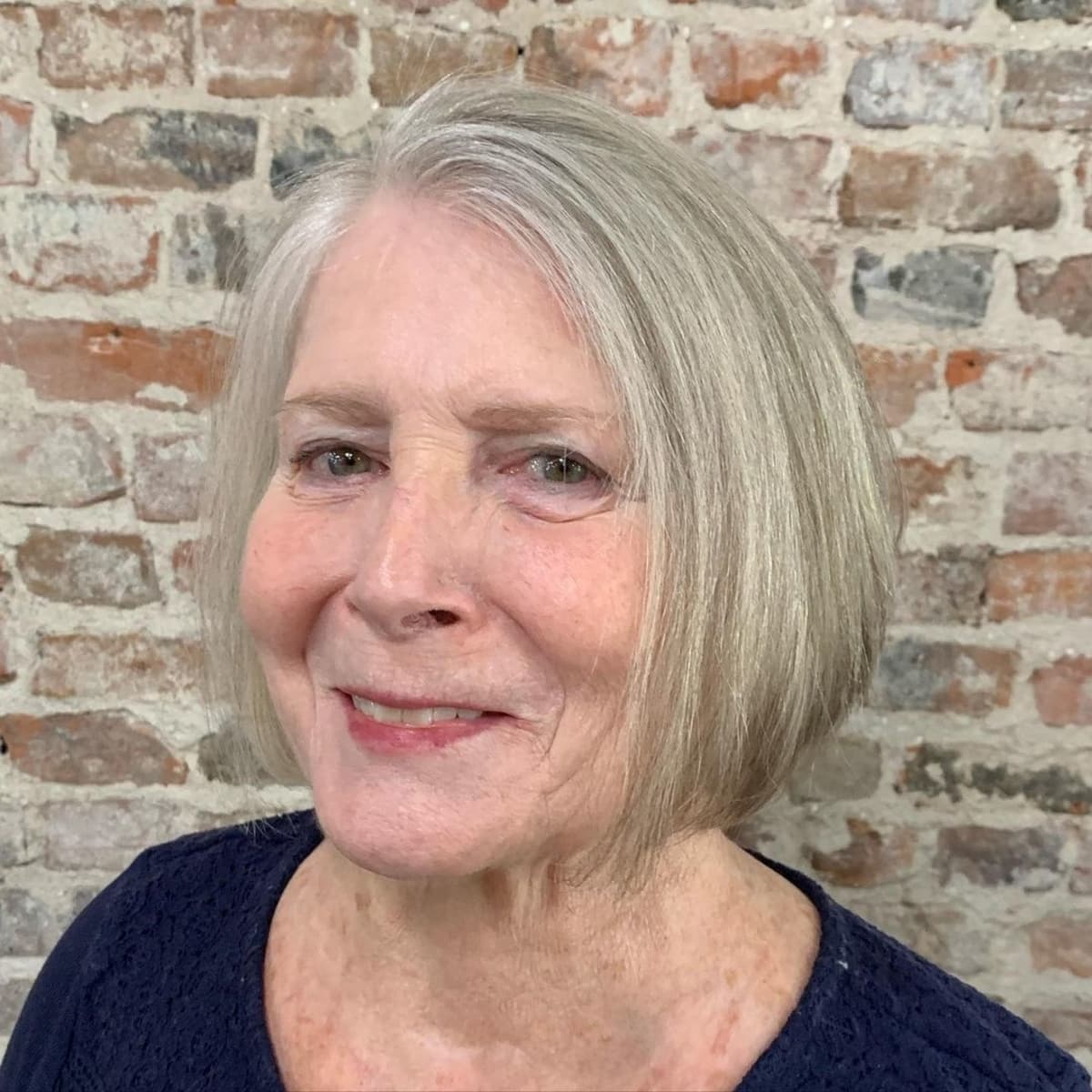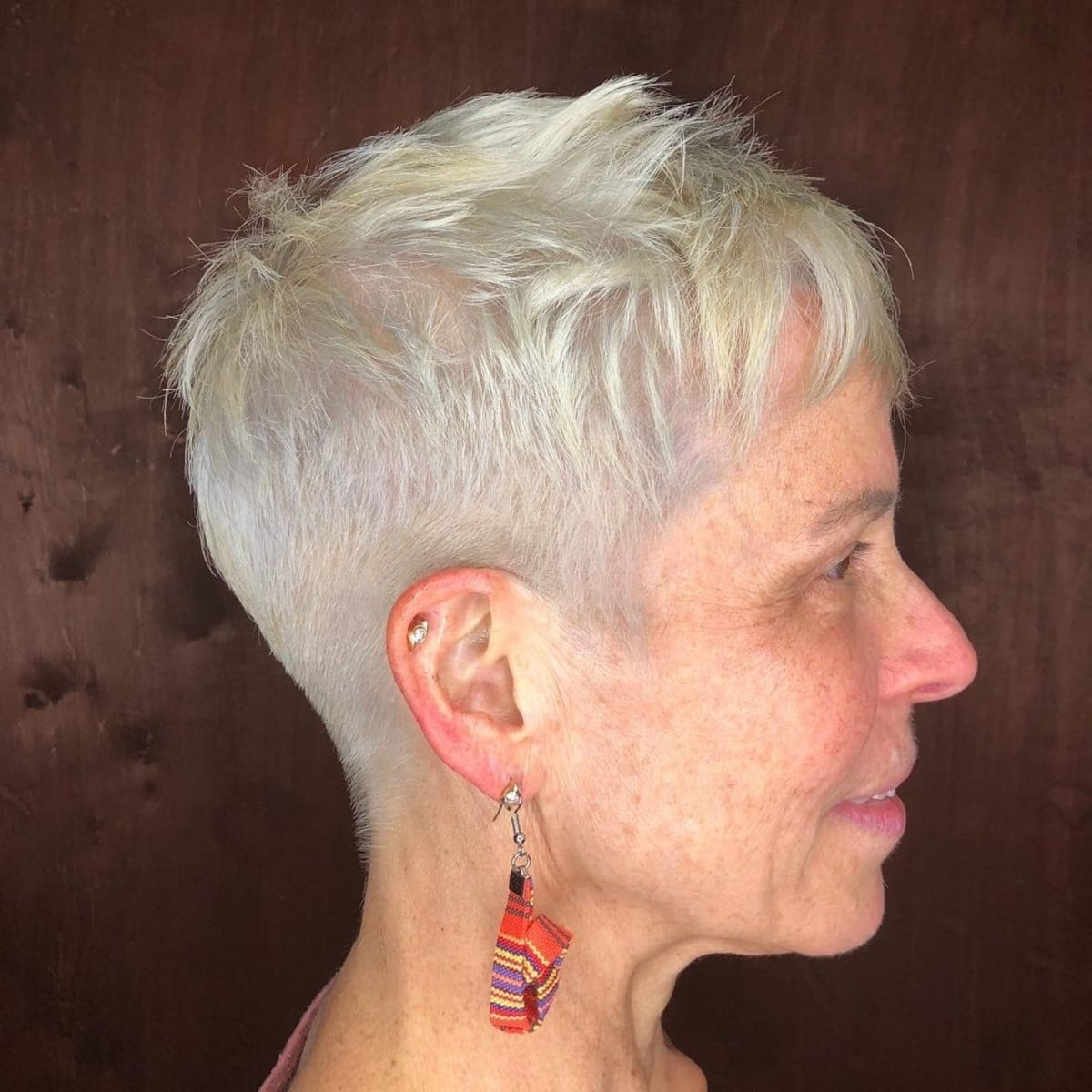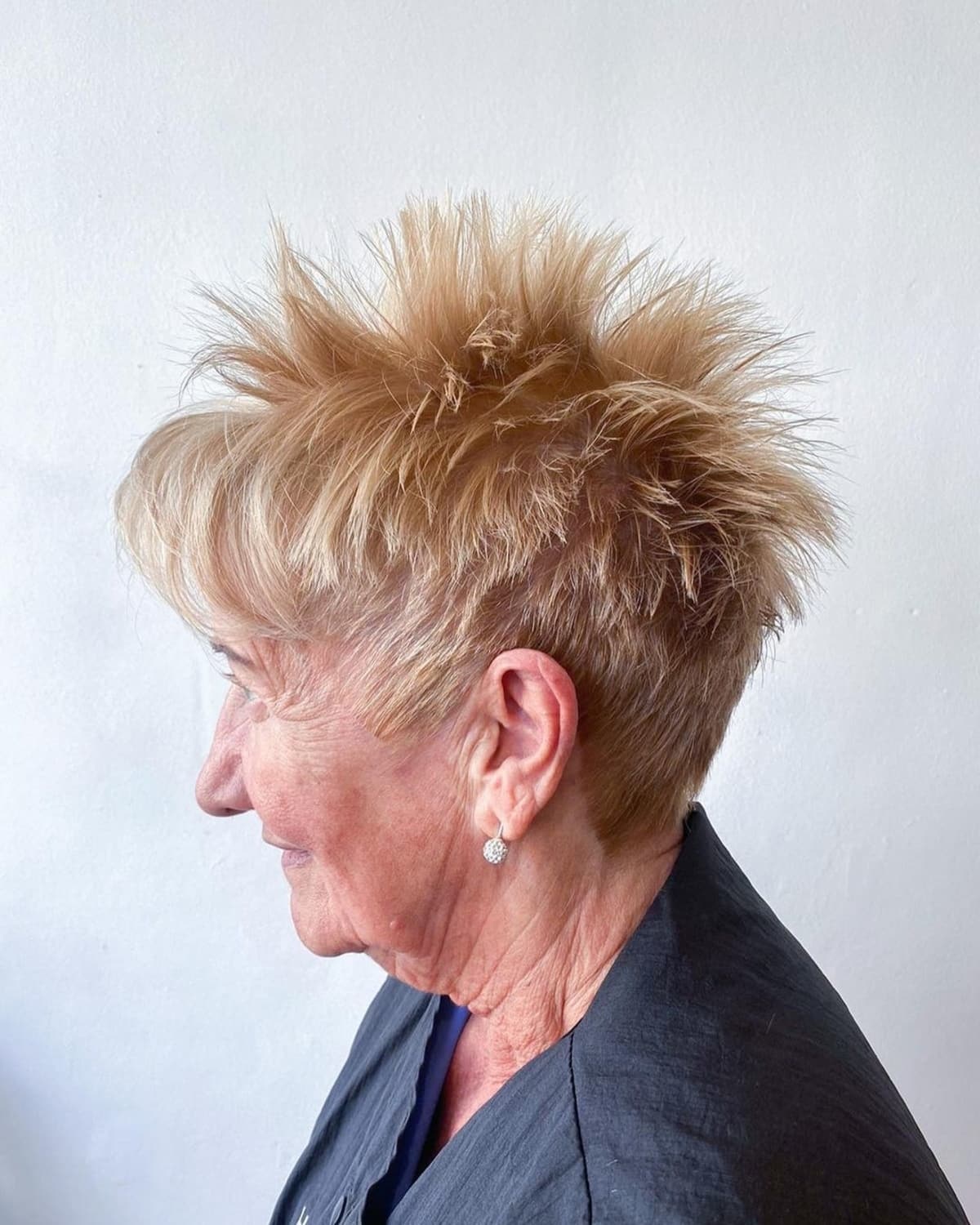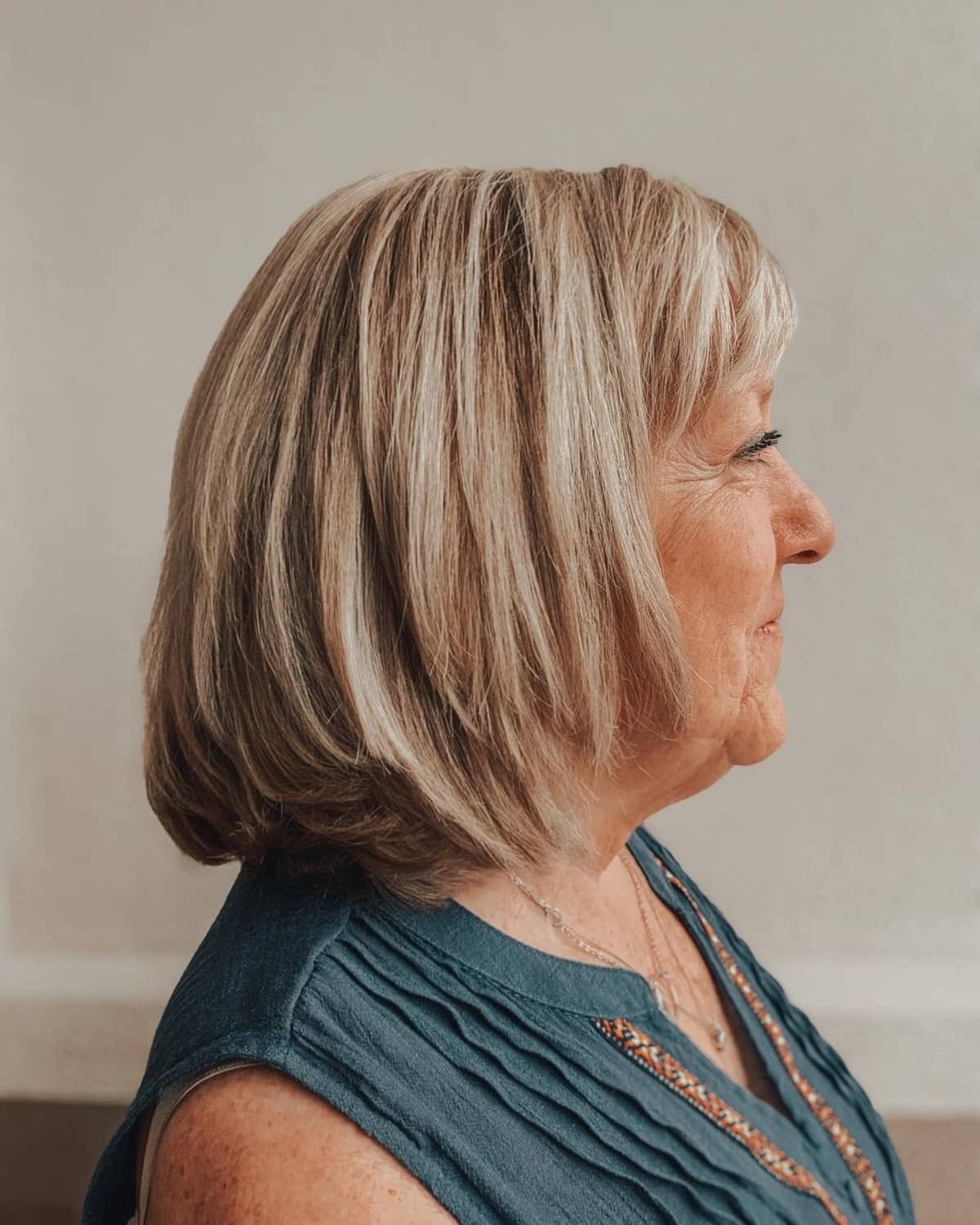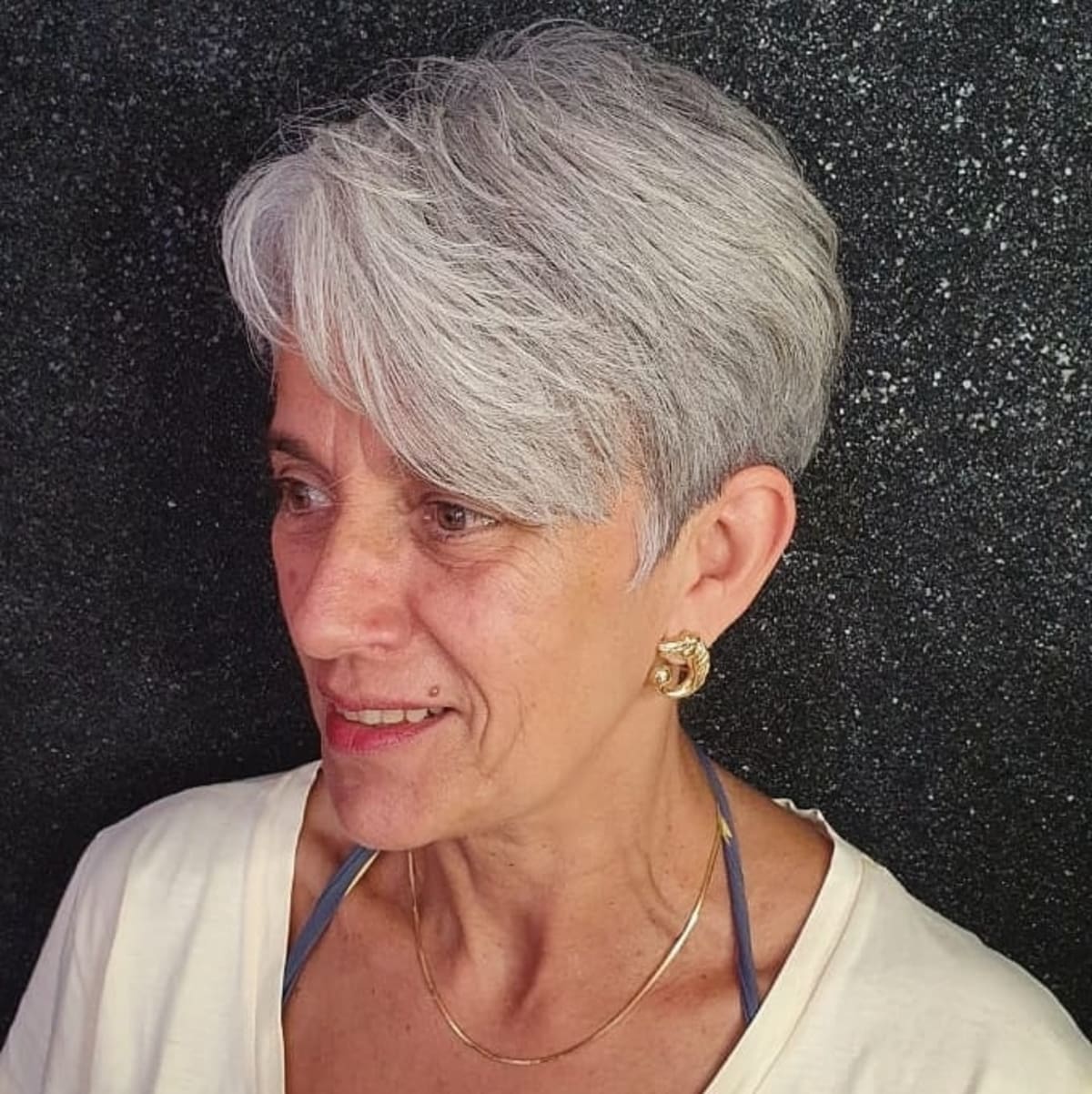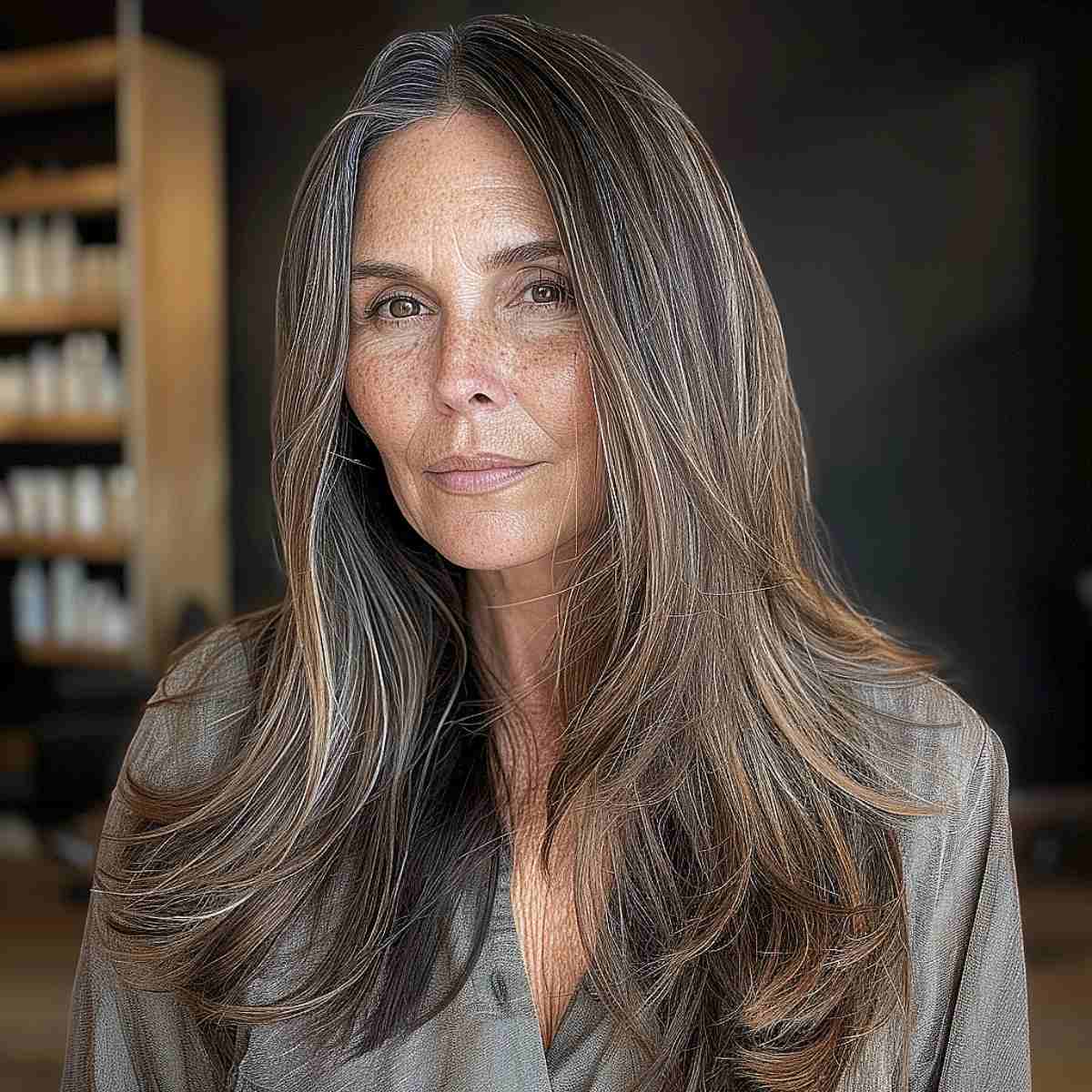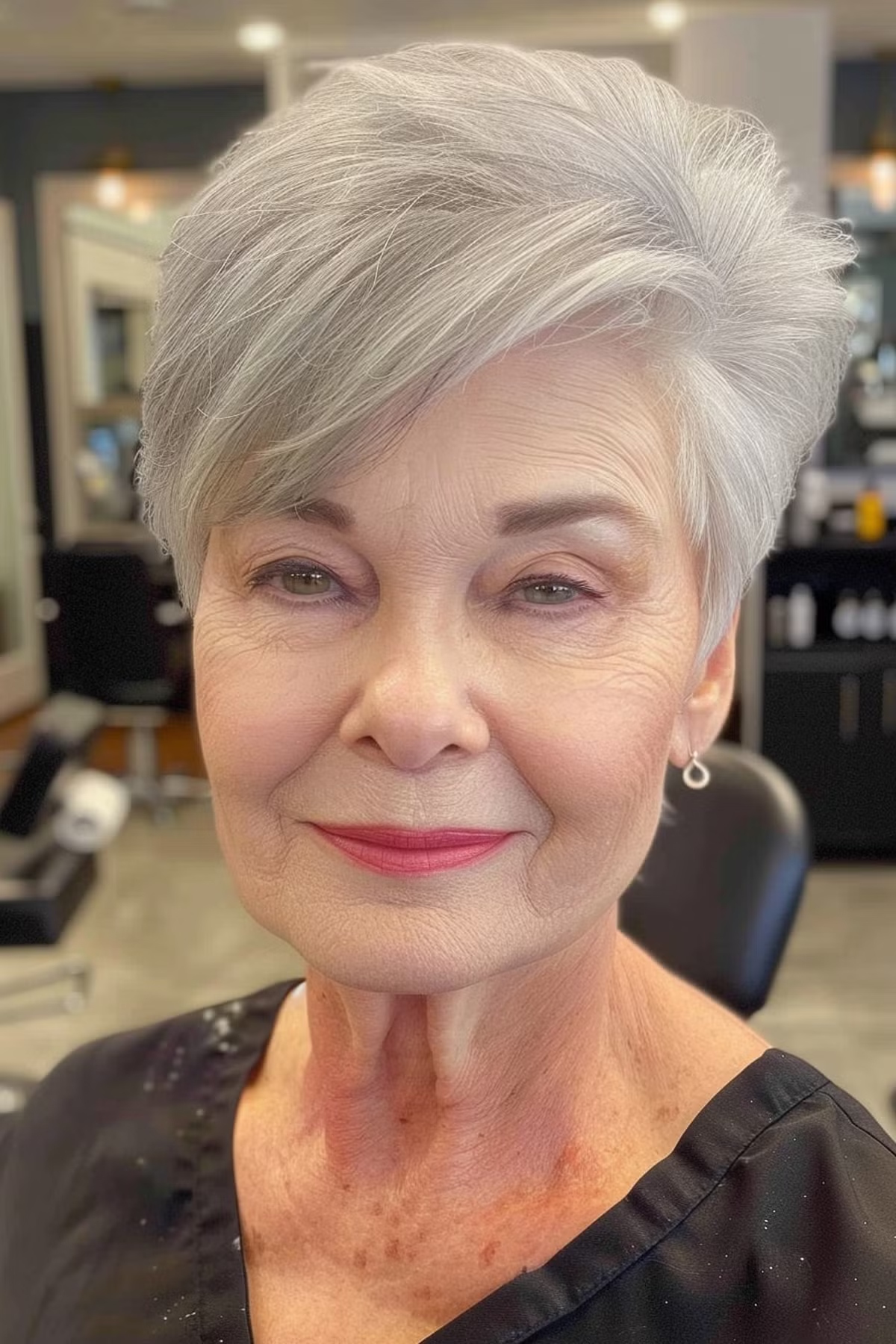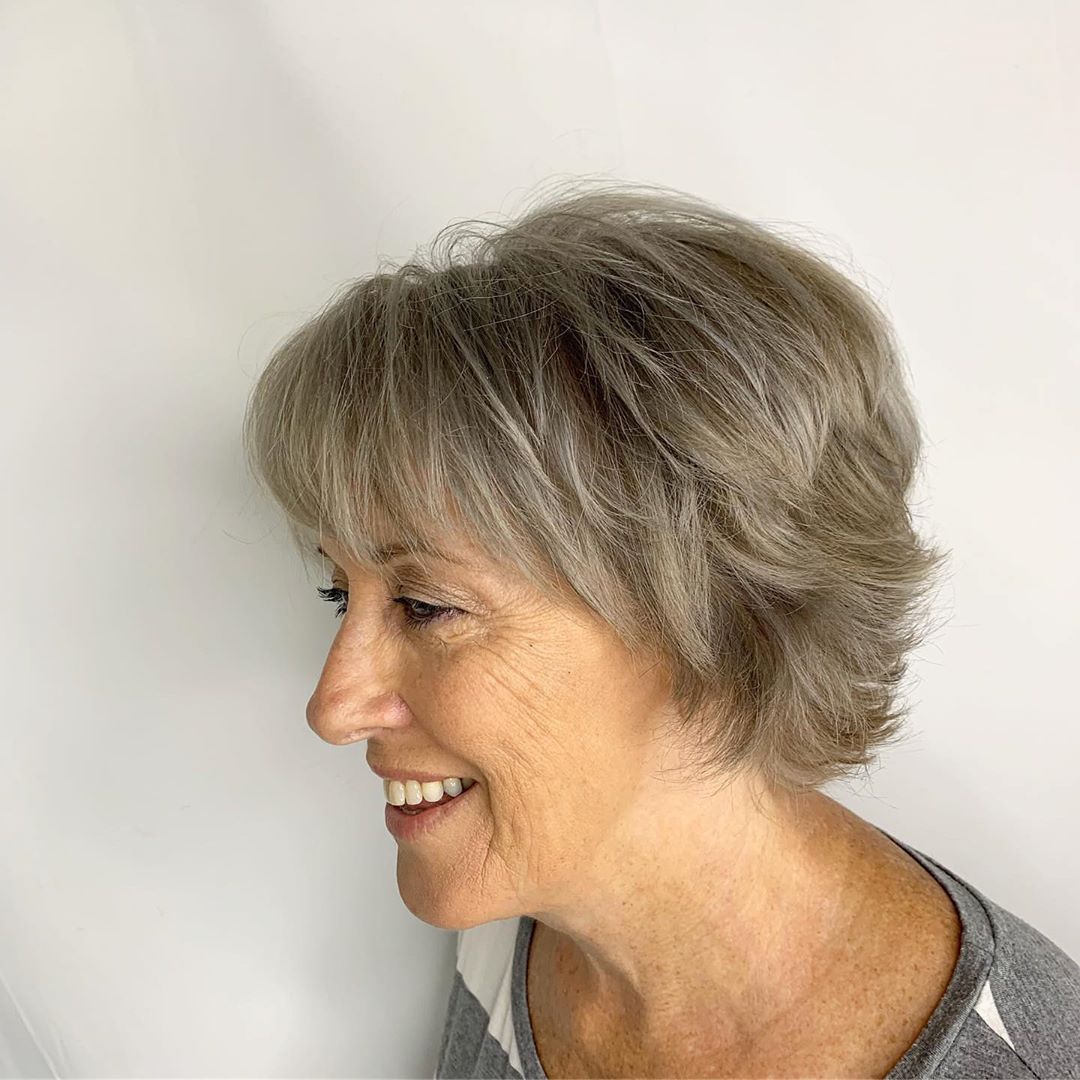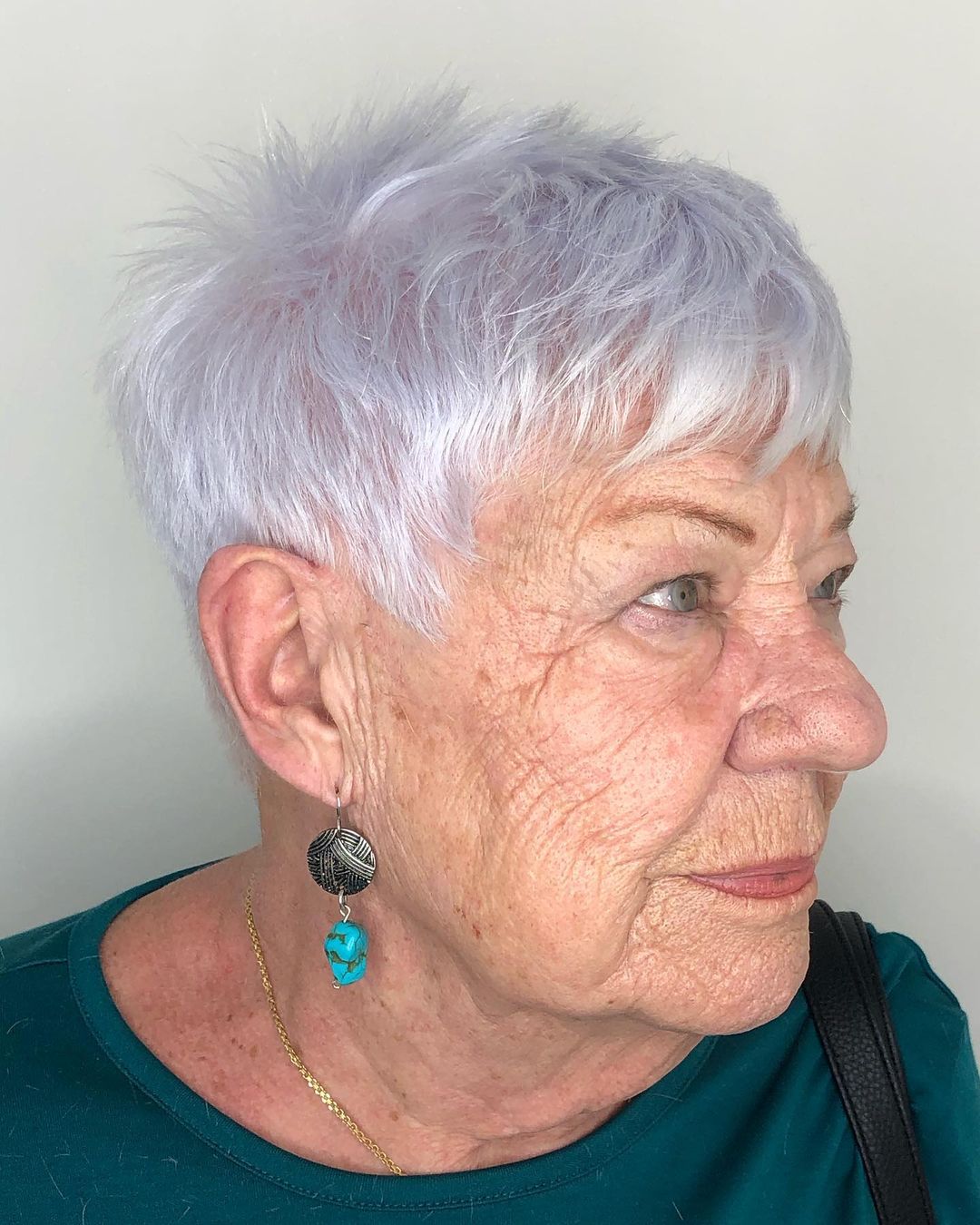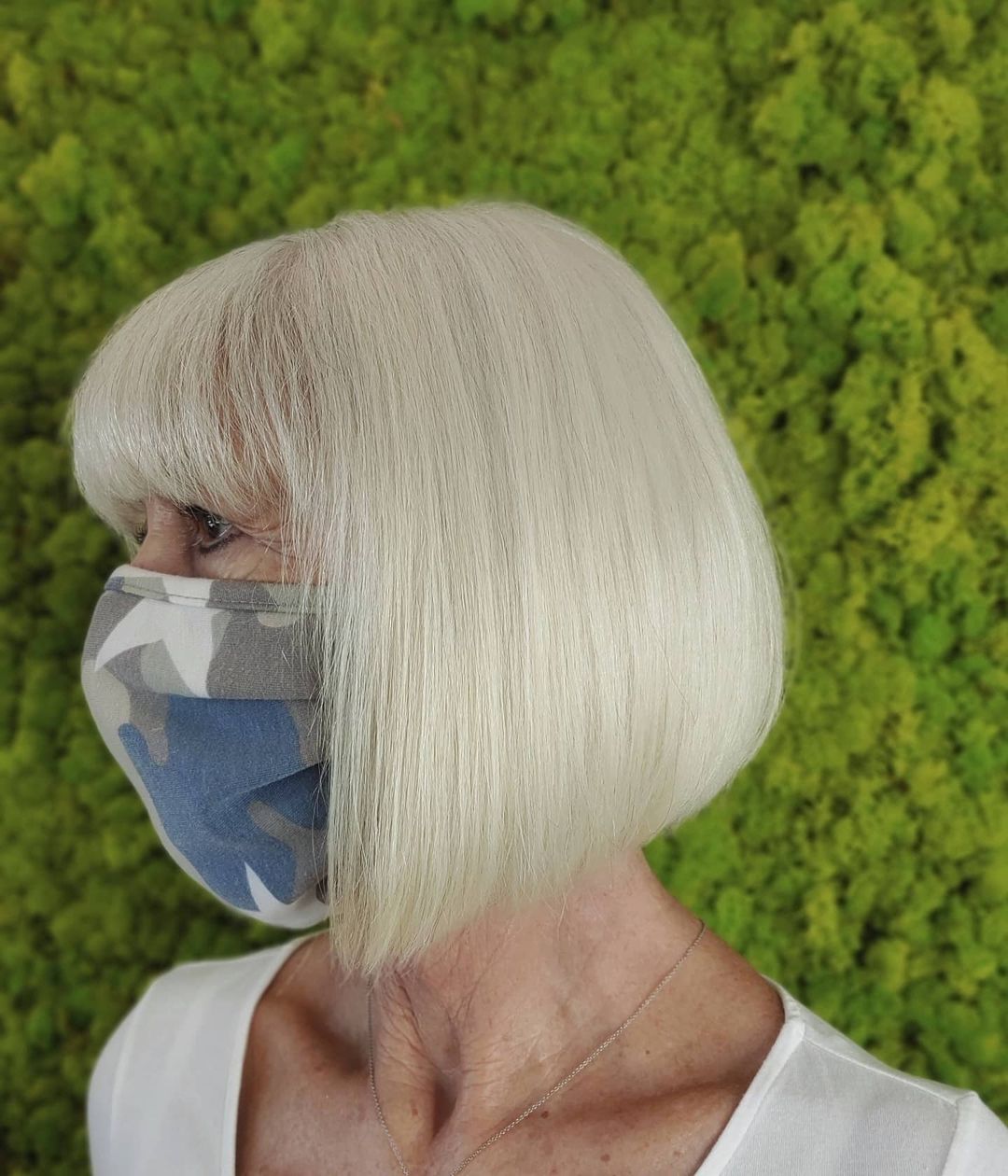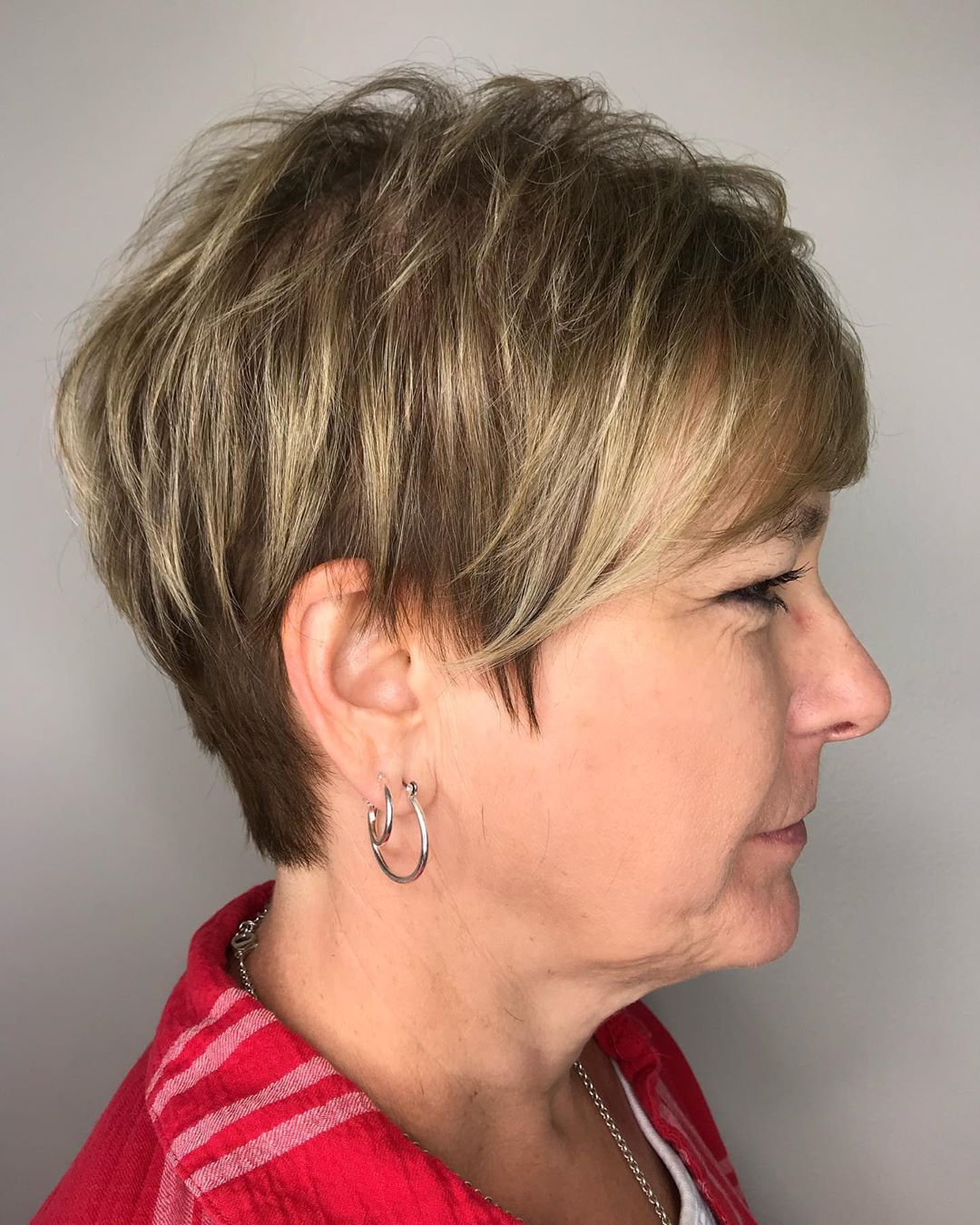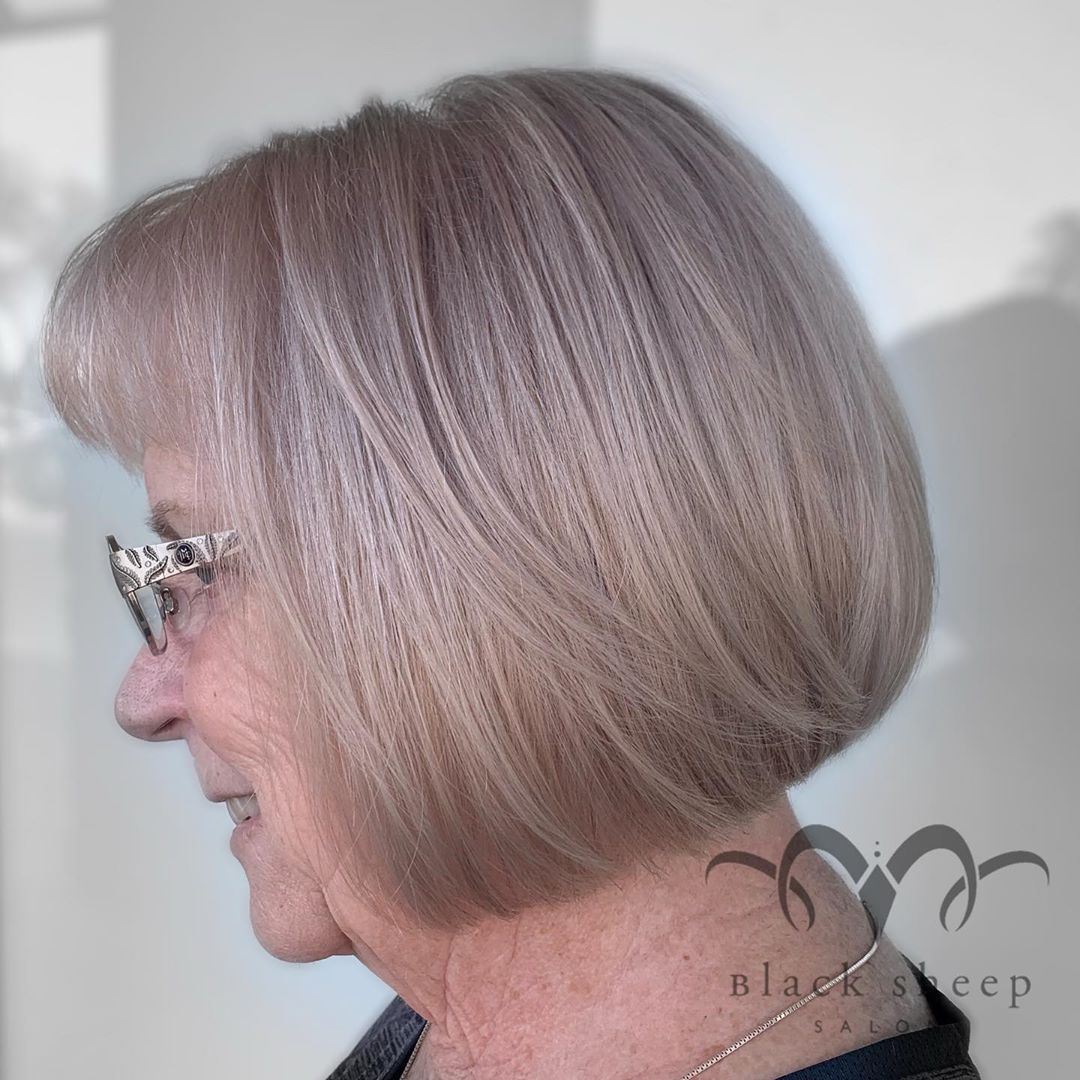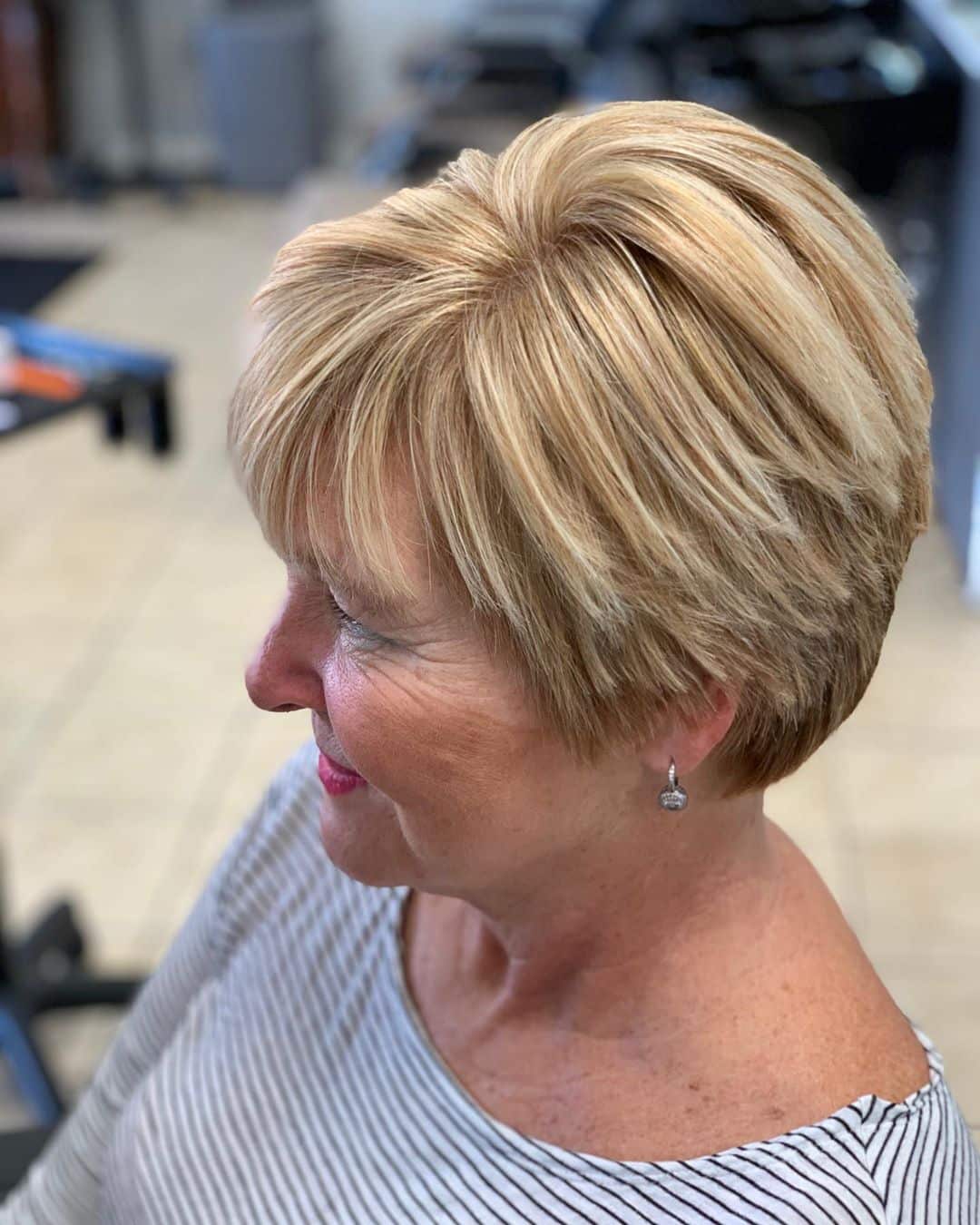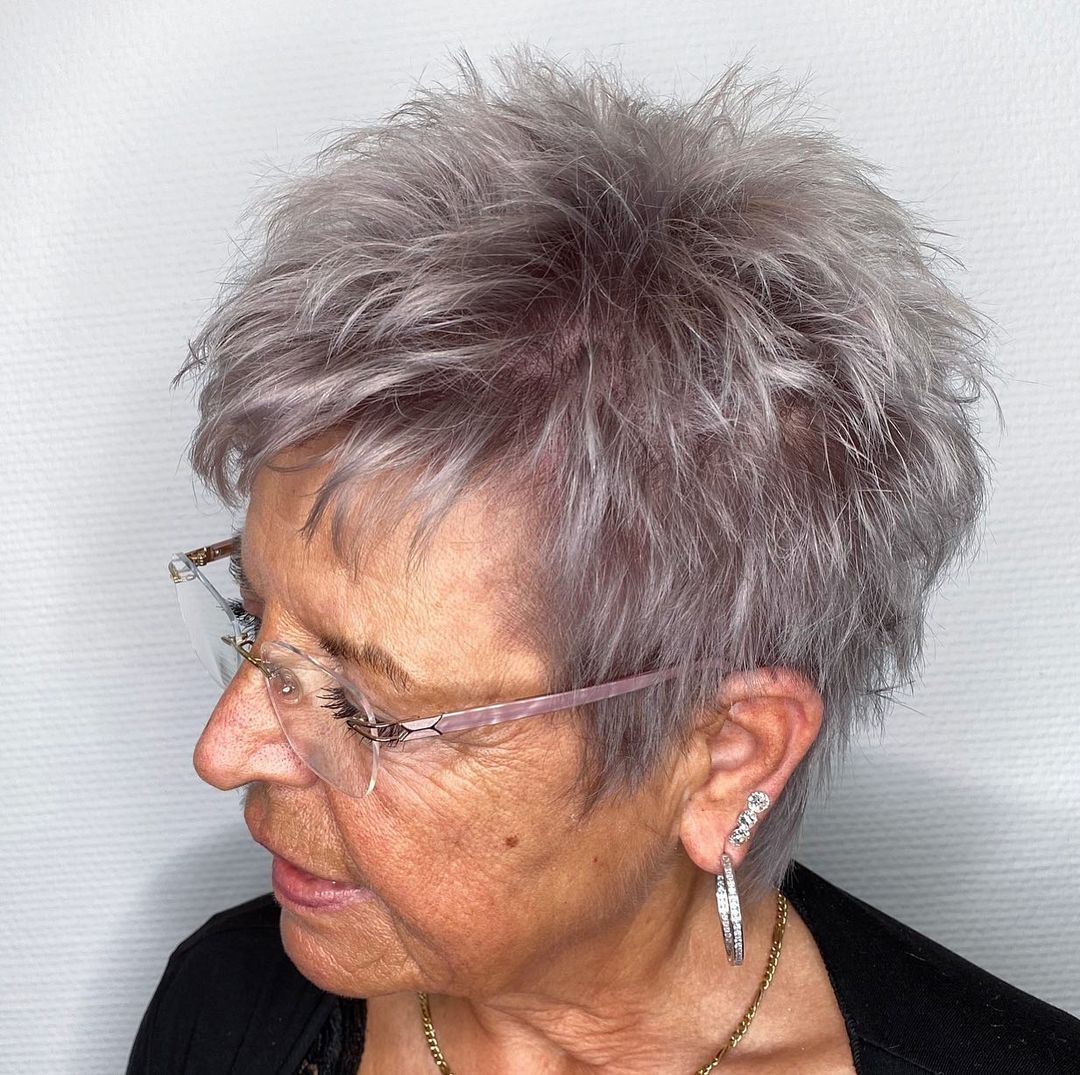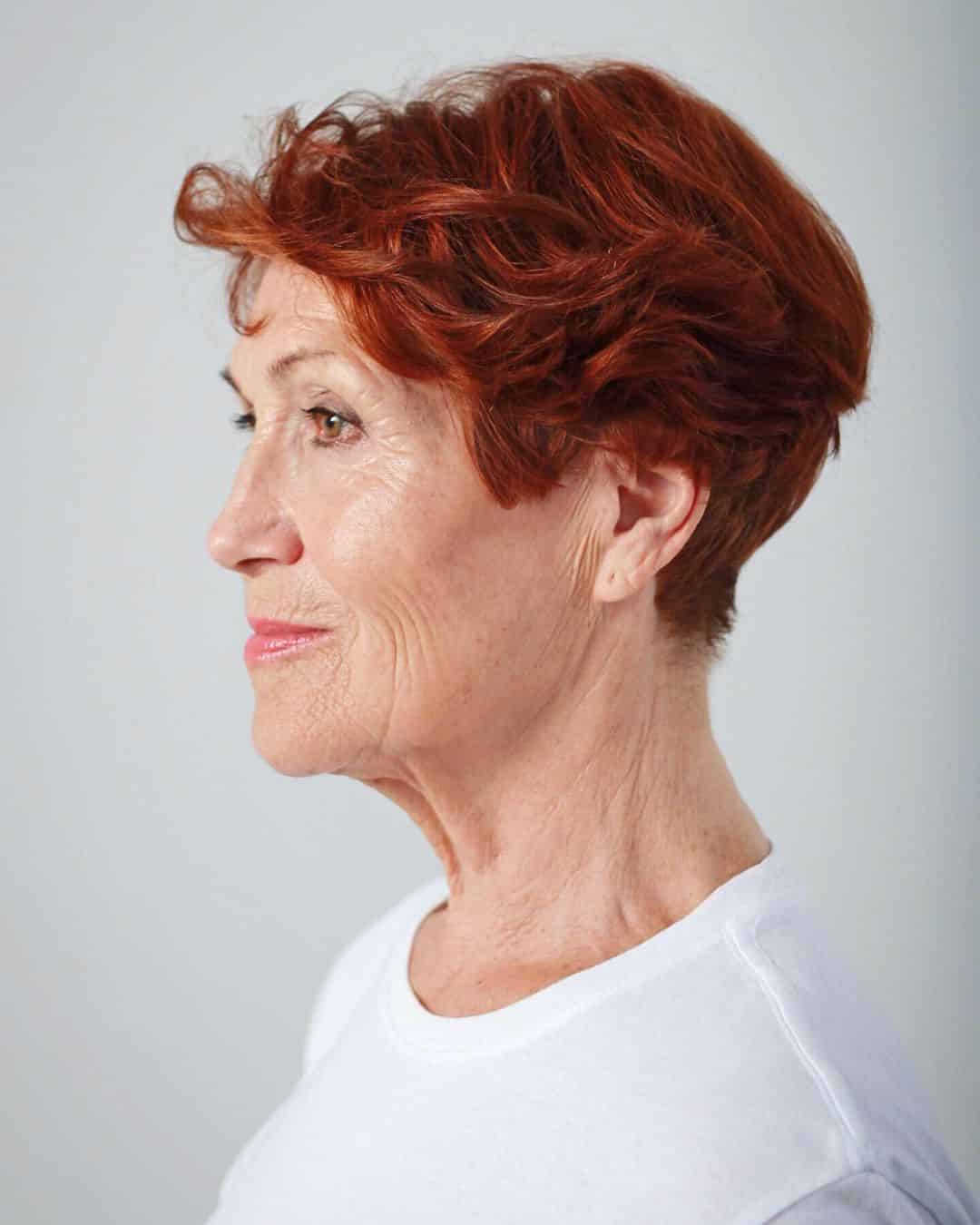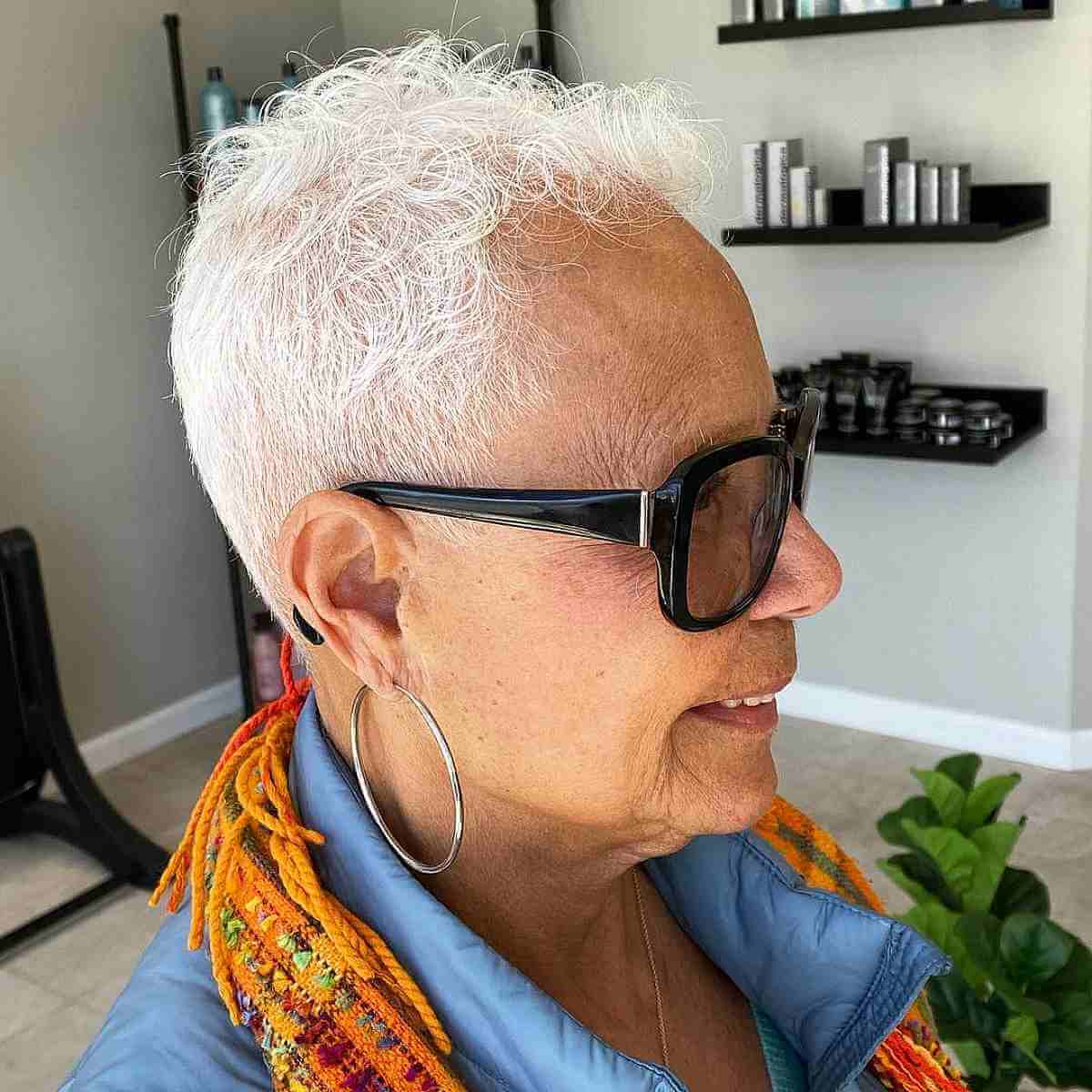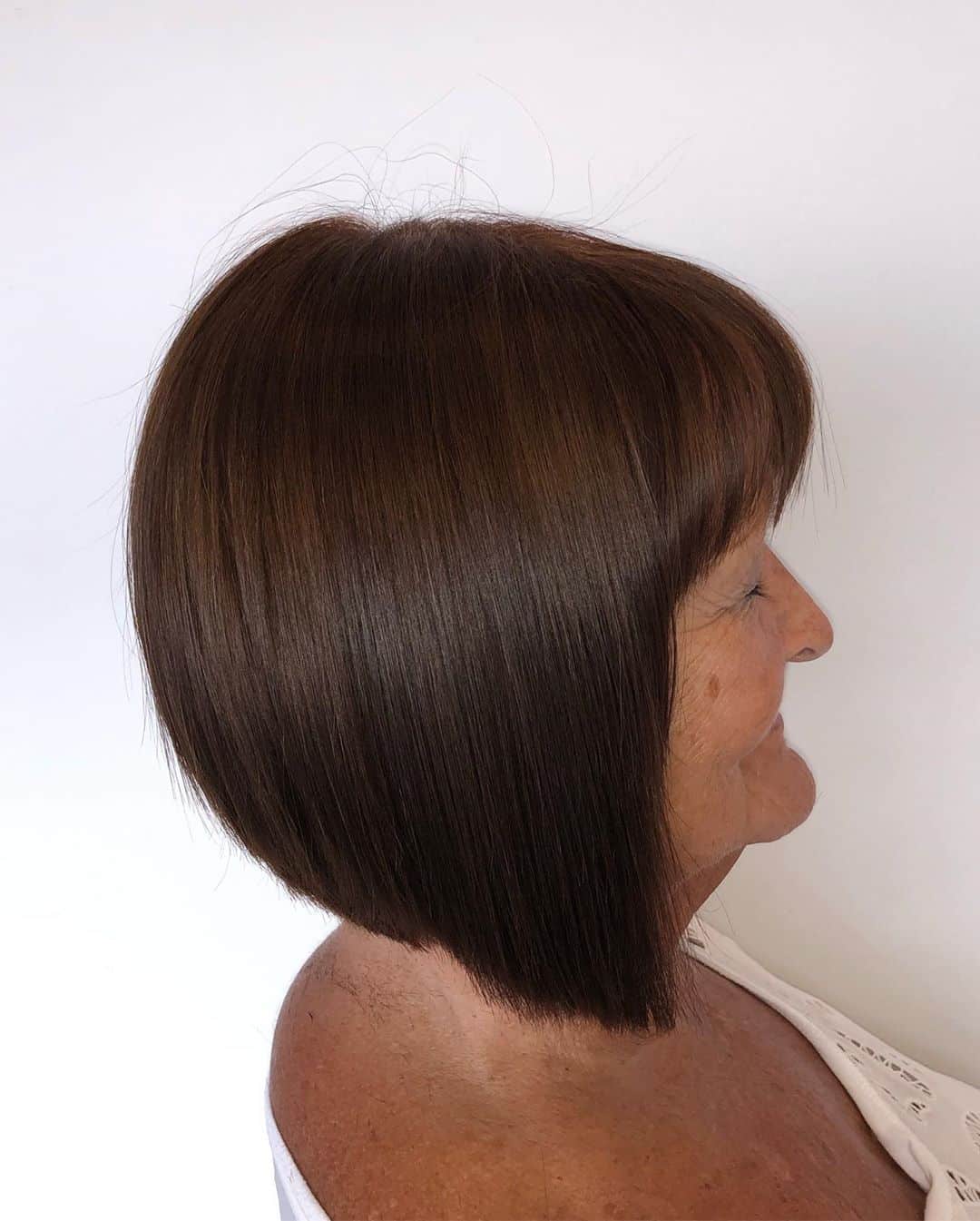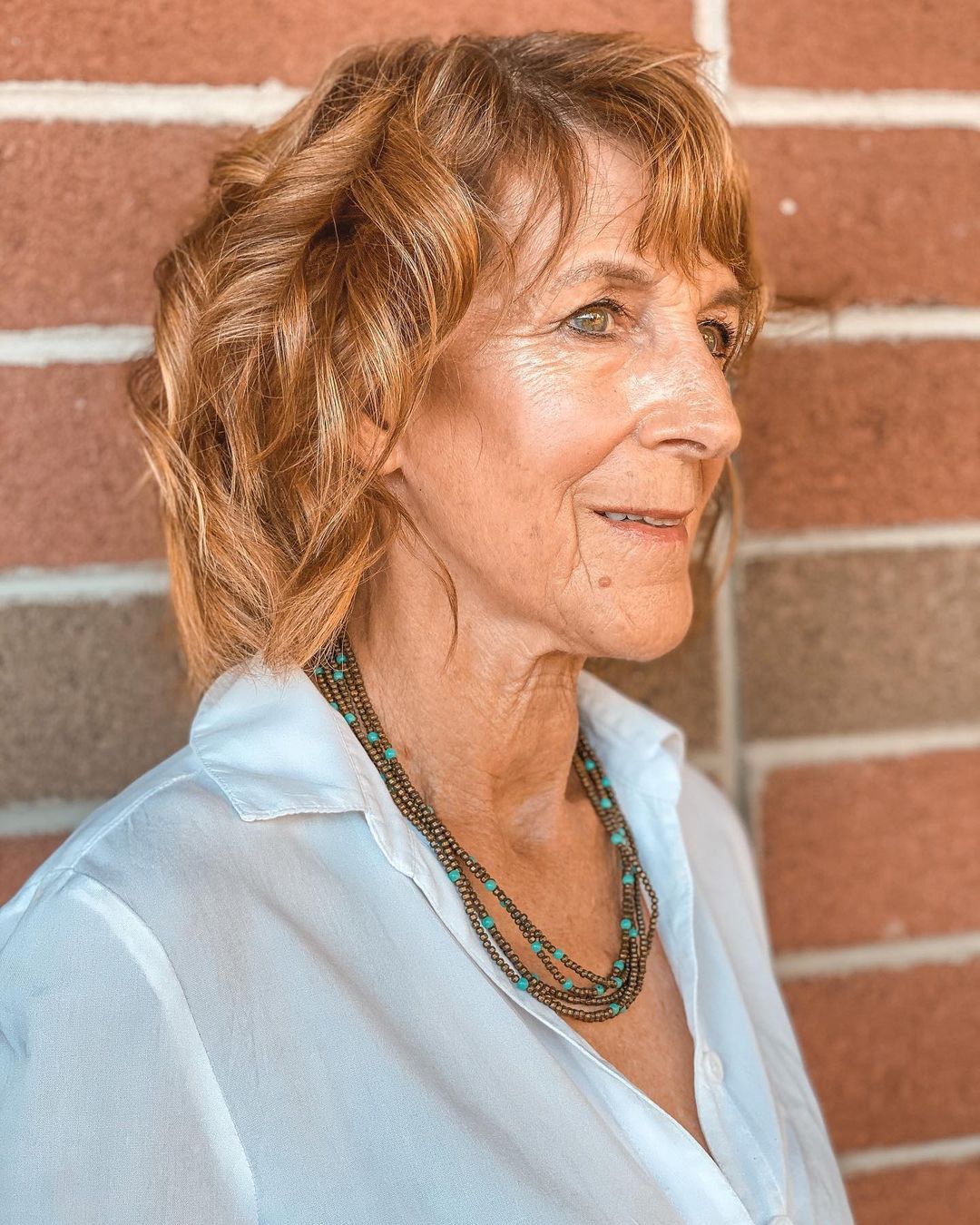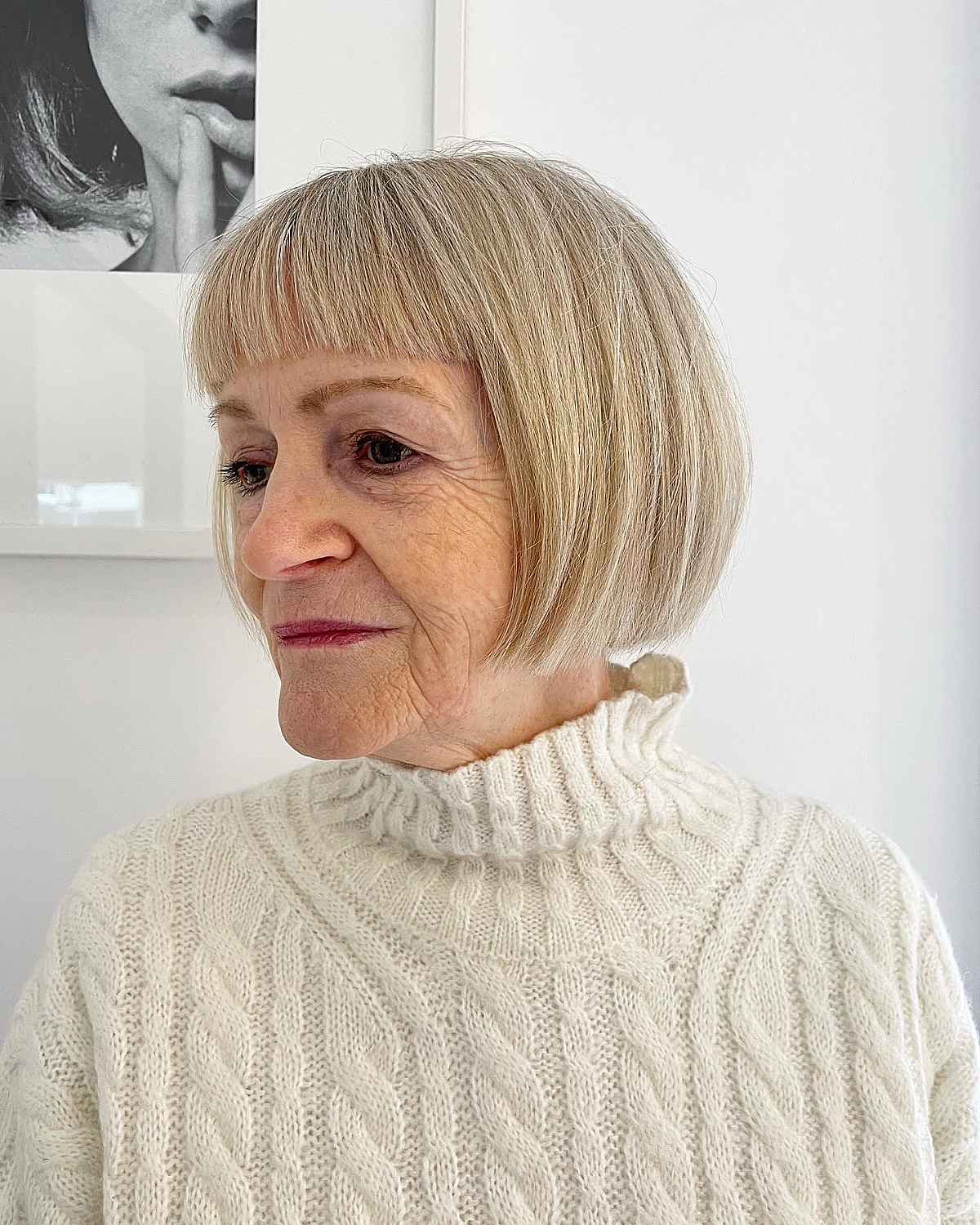They say, “70 is the new 50!” But women over 70 know that doesn’t magically turn back the clock for your hair. While it’s true that you’re as young as you feel, it’s a fact of life that our hair changes as we get older. The most flattering hairstyles for women over 70 are created to “boost volume for naturally thinning hair, fit your everyday routine, lifestyle, and fashion sense,” says Lupita Ornelas, a licensed hairstylist from Frisco, TX. As a hairdresser myself, I couldn’t agree more! But we hairstylists aren’t mind readers. You have to know what you want to at least to some extent. I put together this guide and gallery of hairstyles for women over 70. When you’re done reading, talking effectively with your hairstylist to get the perfect haircut will be easy.
What Happens to Your Hair as You Get Older?
As you get older, your hair color, thickness, and texture tend to change. (Source) Your hair color is a result of your body’s melanin production. Your hair follicles produce less melanin as you get older. This is what causes gray hair. On average, women start to get gray hair in their 30s. (Source)The rate at which your hair grows tends to slow as you get older. This can lead to your hair looking thinner overall. In other cases, the strands become finer without a reduction in density. That means that while your hair might feel finer to the touch, it doesn’t look thinner. All I’m saying is that changes in your hair over the years are entirely regular and to be expected. They aren’t indicators that you’ve taken poor care of your hair! So don’t waste time worrying over things you could’ve done differently. Thinking about what you want from your next haircut is a much better use of your time and energy. On that note, let’s dive into the best customizations and haircuts for women over 70.
Choosing the Right Hairstyle for Your Features
I’ve worked with several women over 70 in my decade of salon experience. And I always tell them one crucial and often surprising—fact. Trendy haircuts you usually see on younger folks aren’t a great option here. Going that route can further age your appearance. Instead, you’ll want a cut customized to camouflage wrinkles. Your hairstyle should also draw attention to your favorite features. With this in mind, here are my tips for achieving whatever your goals may be:
- You’re hiding wrinkles and lines around your eyes or forehead: You’ll want soft facial framing and bangs. This creates movement, which draws the eye away from focusing on wrinkles. Subtle highlights will make this style even more effective.
- You’re reducing the signs of aging around your chin and jaw: Slightly longer styles and chin-length framing will mask these areas well. A shoulder-grazing lob or chin-length bob would also do the trick. A sassy pixie cut will sharpen and lift all your features if you want to go very short. In terms of color, lighter shades will be most flattering and practical.
- You are highlighting your gorgeous eyes: Bangs that are eyebrow-length are perfect for this. Wispy fringe, side-swept bangs, and even blunt bangs are all great options. Are you interested in coloring your hair? A color that contrasts with your eye color will make you stand out.
- You are drawing attention to your fabulous cheekbones: The best way to accomplish this is with wispy layers or facial framing that graze your cheekbones. If you color your hair, highlighting these wispy pieces will make you look even more youthful.
Are Bangs Flattering for Women Over 70?
Yes, bangs are a fabulous choice for most women over 70. The great thing about bangs is how much they’ve evolved in the past decade. Once upon a time, the only real option for bangs was blunt, heavy, and eyebrow-length. But things have changed! Today, women customize bangs to suit their lifestyle, fashion sense, and facial features. The one thing to be aware of is upkeep. Even the most low-maintenance fringe will require trims at the salon every month or so. If you can tolerate that, I 100% recommend exploring bangs with your next haircut. Here are a few great options to consider (and you’ll find examples of these in the gallery below!):
- Blunt or straight bangs: If your hair is thick, this is a great choice. Blunt bangs will cover your forehead and any wrinkles in that area. They also make medium-to-thick hair look even thicker, which you almost definitely want from your hairstyle.
- Side-swept or swoopy bangs: This type of fringe is well-suited to any hair type or thickness. This option will draw attention to your eyes without covering your entire forehead. Side-swept bangs are perfect for women over 70 with smaller foreheads because they balance your facial proportions.
- Curtain bangs, aka bottleneck bangs: These bangs are perfect if you want to camouflage sagging or lines around your eyes. The shape draws the eye outwards when people look at you, reducing the appearance of wrinkles.
- Curly bangs: Consider curly bangs if you have a natural curl, get your hair permed, or set it in rollers. This creates softness and movement around your face, lifting all your features.
- Long fringe: A long fringe might be your new best friend if your hair is thicker. I suggest highlighting your fringe in what’s called a “money piece.” The brightness around your face will brighten your skin tone, giving you a youthful glow.
- Wispy or layered fringe: This relaxed, softer option is one of the best for women over 70. Wispy bangs give your hair an effortlessly stylish feel, making you look younger. The best part is layered bangs look fabulous even on fine or thin hair.
- Micro fringe, aka baby bangs: These uber-trendy bangs are best on women over 70 when paired with a pixie cut. The shorter pieces are chic and fun without making you look like you’re trying too hard. And the short length draws the eye upwards, which lifts your entire face.
Hair Type Considerations
Now you know all about customizing your cut to suit your needs. But there’s another factor to keep in mind: your hair type. Say you find a haircut you love in the gallery below. But the woman in the photo has a very different hair type from yours. In this scenario, that same cut may not be as flattering on you. Sure, you may be able to style your hair to mimic the photo. But how much work will that take? Do you have the time or energy to spend an hour curling or straightening your locks daily? I certainly don’t! That’s why I’m also sharing my tips and advice for every hair type below.
- Dry hair: Adding moisture to your hair will be 100% necessary if you want to wear a longer hairstyle. You can do so with a deep conditioner or conditioning leave-in. Shorter styles will take less effort and upkeep on your part. Book a gloss or deep conditioner service if you color your hair. This will reduce frizz and dryness.
- Wavy, curly, and coily hair: Layers are your best friend. Without them, the shape of your hair can make your face look saggy or droopy. Longer styles are fine so long as you have enough layers to create balance. This is true whether you wear a short bob, a long shag, or anything in between.
- Straight hair: Unless you also have thick hair, your hair will look thinner as it gets longer. And layers reduce the volume in fine and medium hair, so adding layers isn’t necessarily a remedy for this issue. Bangs of some kind and facial framing will make your face and hair look younger.
- Fine and/or thin hair: Shorter styles work best unless you have loads of natural curls. You’ll also want a lighter hair color. The darker you color your hair, the more visible your scalp will be through your hair. Blonde, natural white, or natural gray will make your hair look thicker. So will pastel colors if you’re into fashion shades.
- Coarse and/or thick hair: If your hair feels overly coarse, a glossing service at the salon can add silkiness and softness. Most hairstyles will suit you fine, but be cautious of going too short. For example, coarse hair can become very hard to style with a hairline bob. Pixie cuts, longer bobs, and long layered cuts are better choices.
Styling Tips for Women Over 70
Knowing which options suit you best is a big part of getting a great haircut. But if you struggle to achieve that same style at home, your new haircut won’t benefit you much. And each hair type comes with its styling trials and tribulations. As hairdressers, we want you to be able to style daily without frustration. Check out my tips below to help make your mornings easier.
Styling Fine and/or Thin Hair
Strategy is the game’s name for styling fine and/or thin hair. You see, everything we do to our hair—from brushing to blow-drying—can cause damage. This damage leads to split ends and breakage, which makes your hair look even thinner. I’m not saying you can’t style your hair! Just that restorative products are essential for preserving the integrity of your tresses. With that word of caution out of the way, let’s talk volume. Blow-drying your hair upside down is one of the easiest ways to achieve volume. If your blow-dryer has a “cool” button, use it as soon as you’re done drying. Cooling your hair down rapidly locks in the volume and lift. If you’d instead not turn your head upside-down, a round brush is a great option too. The shorter your hair is, the smaller the barrel of the brush should be. Split your hair into sections. I like to do my nape as one section, the rest of the back, and each side. Focus on your roots first, then your ends. And don’t forget the cool air if your blow-dryer has this feature!
Styling Medium to Coarse and/or Thick Hair
With this hair type, you usually deal with super-wiry gray and white hair. Especially around your temples, these hairs can seem uncontrollable. The secret to styling and smoothing these unruly hairs is adding moisture. And my favorite product for this purpose is Redken All Soft Argan-6 Oil. This lightweight product conditions deep down, infusing locks with softness and shine. It’s one of the best things I’ve found for taming those tough hairs. You can apply this product to damp hair and style it as desired or use it more as a spot treatment for wiry hairs on dry hair. It’ll also reduce drying time when applied to damp hair, making styling much more accessible. Now for a couple of styling tips. If you feel your hair is too thick or poofy, don’t blow-dry with your head upside down. Instead, use a brush or your fingers to direct your hair down as you dry. When your hair dries flat against your head, you’ll get a smooth and sleek result.
You can also skip blow-drying altogether. Apply your favorite leave-in conditioner, comb through thoroughly, and allow your hair to air dry. The leave-in conditioner will reduce any natural poofiness and frizz.
Styling Wavy, Curly, or Coily Hair
If you want to show off your natural texture, the healthiest styling method is the Curly Girl method. This gives you maximum volume and minimum damage! I use this method myself and have for several years now. There are many ways to customize this system to match your unique hair and lifestyle. You can blow-dry with a diffuser or air dry. It’s your call how many products to use and how often to shampoo. But what if you want to smooth your hair for a sleeker, straight style? You can blow-dry with a boar bristle round brush. These brushes are famous for straightening curls, waves, and coils without sacrificing shine or softness. My favorite is this boar bristle round brush because it pulls hair straight but is also anti-static. You’ll get a smooth, shiny blowout without the usual problems with straightening curly hair. Want a more hands-off approach? You can use a technique that existed long before blow-dryers and hair straighteners.
While your hair is damp, wrap it around your head. Imagine your head is like one giant roller. I like to start on one side, comb all that hair back, then around the back of my neck, up and over the other ear, and finally around the top of my head. You’ll likely need some bobby pins or roller clips to secure the hair as you go. But once secured, you just go about your business. Once your hair is dry—which usually takes around 12 hours—release it and brush it out. The straighter and tighter you pin it to your head, your dry hair will be straighter.
The Best Hair Accessories and Styling Products for Women Over 70
With everything you’ve learned so far, you’re almost an expert in choosing the best hairstyles for women over 70. You also need to know how to style your hair at home. After all, is there anything more disheartening than when you can’t replicate your salon style at home? But once you read through my suggestions on hair accessories and styling products, that problem will be a thing of the past. Let’s start with a question I always hear regarding hair accessories.
Can Women Over 70 Pull-Off Hair Accessories?
Yes, hair accessories can look fabulous and effortless on women over 70. If you’ve ever told yourself that these options are for the younger crowd, I invite you to let go of that thought. You have choices from scrunchies to headbands to barrettes and everything in between. The biggest thing to remember is the design of any given accessory. For example, headbands with huge floppy bows or giant flowers are best left to young girls and teens. But consider a silk scarf worn as a headband. Or a sleek, skinny headband in a color that contrasts with your eyes. These options will give you a youthful appearance rather than draw attention to your age. The same is true for barrettes, scrunchies, and anything else you want to wear in your hair. If you can picture it on a young lady—think 16 or younger—it’s likely not the most flattering choice for you. The last thing I want to mention is color. You can rock any color you like with your accessories! When I say imagine whether it’d suit a younger gal, I’m talking about giant bows, tons of glitter, and anything overly cutesy. Your hair accessories should make you think of elegant, classy, and sassy words.
Volumizers
Most women over 70 that I’ve worked with want more volume. And since our hair gets finer as we age, this is no surprise. The challenge comes in finding products that add volume without weighing down your hair. My absolute favorite of all time is Aveda Thickening Tonic. I love Aveda products because botanical ingredients, not lab-created chemicals, power them. This one instantly thickens your hair and adds lift from your roots to your ends. You have to give it a shake, spray liberally to towel-dried hair, and then comb through. Another good option is Nioxin Thickening Spray. For over 20 years, Nioxin has pioneered research into ingredients to help thicken thinning hair. And this is one of their best creations. It also contains peppermint oil, which has been found to stimulate the scalp and help hair grow. (Source)
Shampoos and Conditioners
Your shampoo and conditioner create the foundation for every hairstyle. This makes it a critical choice for women over 70. The wrong products can leave your hair looking thin, flat, and greasy. But the right ones can nourish your tresses, revitalizing their feel and appearance. I’m a big fan of Nexxus Ultimate Moisture shampoo and conditioner. While these aren’t specifically made for women over 70, the powerful ingredients will give you all the benefits you’re after. You can expect silkier, shinier locks that are still bouncy. You’ll want a brightening shampoo if you rock your natural gray or white hair. Gray and white hair is prone to becoming dingy, thanks to environmental pollutants. (Source) One of the best I’ve used is Rene Furterer Okara Silver Toning Shampoo. This product will neutralize any yellow, brassy, or dingy tones in your tresses. If you deal with many harsh environmental factors, like swimming in chlorine often, you’ll also want a brightening conditioner. I can’t say enough good things about Oribe Silverati Conditioner. This dermatologist-tested conditioner boosts hydration and elasticity while removing unwanted tones.
Additional Styling Products
The last type of product I want to discuss is restorative leave-ins. As I mentioned earlier, our hair gets weaker, more fragile, and thinner as we age. Breakage, frizz, split ends, and a thin appearance are common issues for women over 70. Living Proof Restore Repair Leave-In is a fabulous solution to these problems. All you need to do is apply 1-2 pumps to damp, towel-dried hair. It works wonderfully on curly, wavy, and straight hair textures. You can follow up with your blow-dryer or let your locks air dry. My second recommendation, Surface Hair Awaken Scalp Elixir, is more for your scalp than your hair. I like it adds a bit of volume and lift to the roots. But its primary purpose is balancing your scalp health to encourage thicker hair and faster growth. This brand also offers a full range of products if you’re a fan of this one.
Talking with Your Hairstylist
The last thing I want to teach you is how to communicate well with your hairstylist. When you both are on the same page, you’re much more likely to get the results you imagine. Let’s break things down into upkeep for the cut and coloring of gray hair.
Desired Level of Maintenance
Before your appointment, consider your salon visits frequency and your daily styling preferences. These two factors significantly impact which hairstyles will be an excellent match for you. You’ll struggle with bangs if you only want to come in for trims once or twice a year. Bangs need to be trimmed up every month or two, at least. The same is true of most bobs and pixie cuts. When you’re transparent and honest with your stylist about how often you’ll come in for trims, they can customize the cut to suit your lifestyle. You’ll also want to talk about your daily styling routine. Most bobs are highly compatible with weekly roller sets. Pixie cuts usually need a bit of product and styling each morning, but it should only take a few minutes. Medium to long hairstyles can go either way. You can pull them back into a braid, ponytail, or bun. But you’ll also spend longer washing your hair at this length than a bob or pixie. Think about what you do, and don’t mind when it comes to doing your hair. Once your stylist knows your ideal routine, they can ensure your new style aligns.
Getting the Perfect Hair Color
To be honest, coloring gray hair requires some extra attention to detail. We, hairdressers, use many specific methods to help your color adhere, turn out right, and last a long time. But gray and white hair is known to be particularly resistant to dyes. If you’ve noticed that certain areas of your head are incredibly stubborn or don’t take color well, inform your hairstylist. The more we know about your unique head of hair, the better results we can achieve for you. You’ll also want to consider your desired hair color ahead of your appointment. The photos in the gallery below will give you some great ideas. You’ll likely notice there are few photos of women with their hair dyed dark. This is because the darker your hair is, the more visible your scalp is—depending on your skin tone. Picking a color with the same level of lightness as your skin tone will make your hair look thicker. If you want a color opposite of your skin tone, consider getting highlights of it instead of your whole head. I suggest you bring a couple of photos of the hair color you like to your consultation. A picture is truly worth a thousand words regarding hair color. What you consider “blonde highlights” and what a stylist considers “blonde highlights” can vary greatly. As you discuss the photos, mention any concerns you might have. This includes worrying about whether a shade will brighten your skin tone, wondering how often you’ll need touch-ups and anything else on your mind. As stylists, we love collaborating with you to realize your vision.
The Most Flattering Hairstyles for Women Over 70
You’ve learned so much just by reading through this guide! With your newfound knowledge, you’re ready to scroll through the gallery below. Women over 70 truly can wear any length of hairstyle. Keep this in mind as you browse, and remember any haircut can be customized to suit your needs!
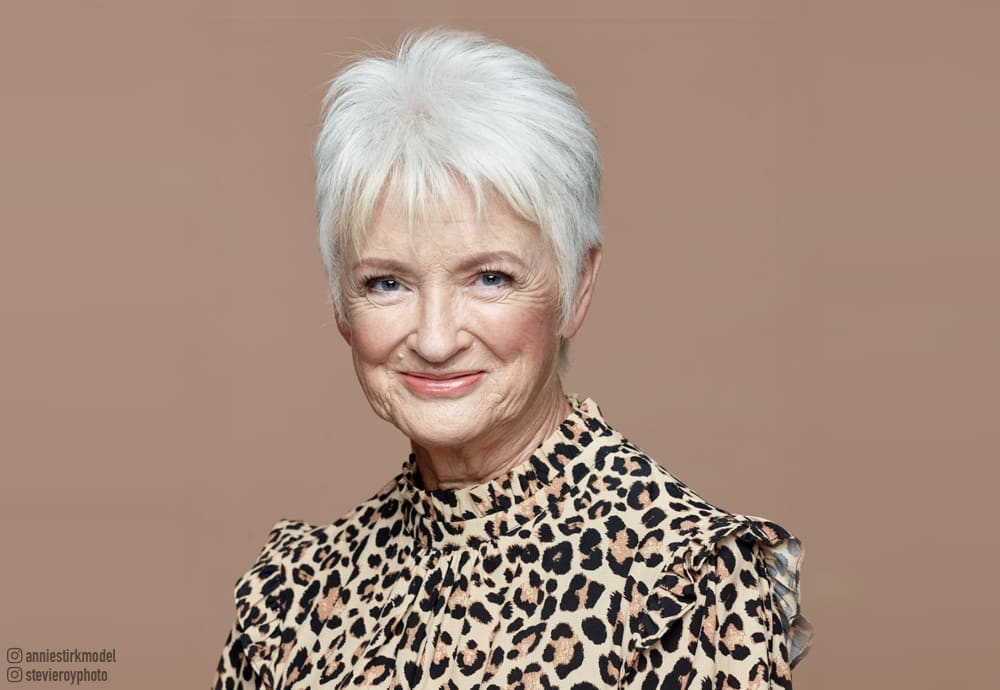 ↓ Jump to Photo Gallery
↓ Jump to Photo Gallery

